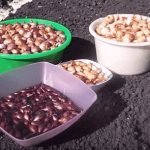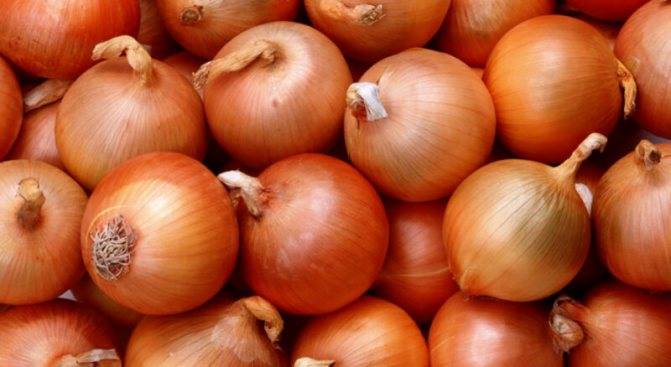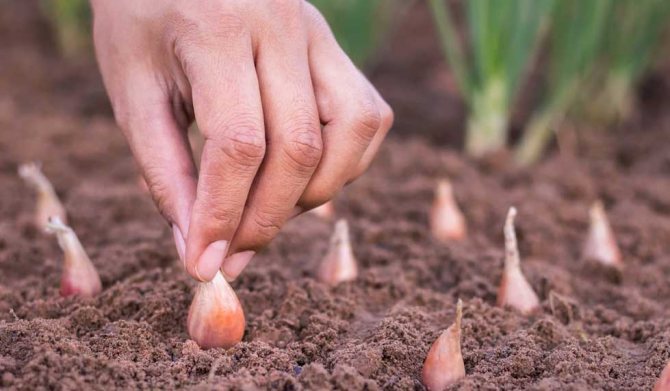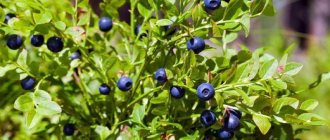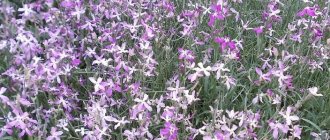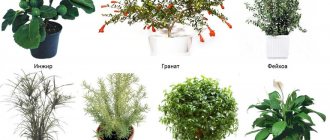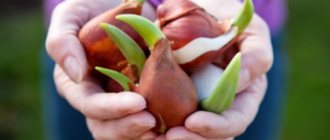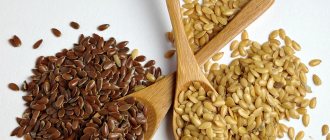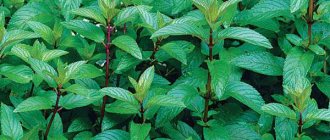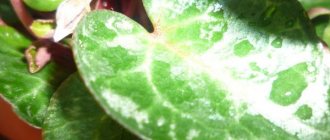Onions are very popular and loved by most people. Without it, as well as without potatoes, any dish rarely does. White crispy heads are delicious, both fresh in salads and when added to hot dishes. In addition to its excellent taste, the vegetable has numerous healing properties. It is not for nothing that the people say about him: "Onion from seven ailments." Therefore, there is rarely a person who would not grow onions, if not in the garden, then on the windowsill.
The most common way to grow onions is by propagation with bulbs or by planting sets. With proper planting and subsequent care, the vegetable harvest is excellent: the bulbs grow large, which is what all gardeners want. But not everyone succeeds in growing large bulbs. Then how to plant onions in the spring so that it grows large? Perhaps, having learned all the secrets of growing, you will also grow a good harvest of it.
How to prepare a site for planting?
Onions love lighted areas and do not tolerate lowlands with heavy waterlogged soils. Cabbage, cucumber and nightshade are good predecessors for it. These crops do not have common pests and diseases with onions, and since their cultivation is accompanied by the introduction of high doses of organic and mineral fertilizers, the soil remains sufficiently nutritious.
Also, onions can go after zucchini and peas, but it is undesirable to occupy them with areas that were previously under carrots, since fresh organic matter is not introduced under this culture, and onions require fertile soil. But the site after it is released late, you may not have time to prepare it for a new planting. You can plant carrots after onions, joint planting and the close arrangement of the beds are good (they scare away pests from each other).
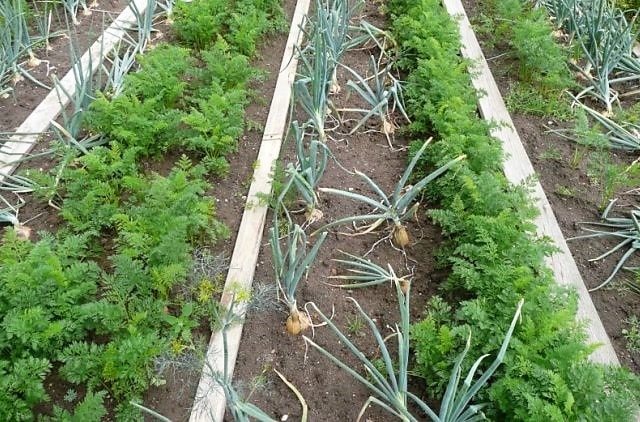
The plant can be returned to its original place no earlier than after 3 years, and with high disease damage - only after 5 years. Planting onions on the head in the spring should be carried out in loose and moderately moist soil, therefore, in the fall, the site should be dug onto a shovel bayonet, and in the spring it should only be raked and leveled.
If necessary, compost or humus and phosphorus-potassium fertilizers are introduced in the fall. To neutralize the soil solution on acidic soils, chalk or lime is added. It is recommended to occupy the plots where fresh manure was introduced with onions only for 2 years.
What are the benefits of autumn planting?
We recommend reading our other articles
- Why do cucumber leaves turn yellow
- The sweetest varieties of carrots
- Early peach varieties
- Raspberry Hussar
Planting onion sets in autumn has many positive aspects.
- Small sets are usually sold in autumn. This may seem like a disadvantage, however, small seed usually does not produce an arrow, and if it does, it will not appear soon. There are few shooters, which means that there is much less work for the gardener.
- When planting in autumn, the crop can be harvested in July! This significantly saves autumn time, when the already abundant harvest requires processing and storage. It also allows you to grow some more early maturing crops before the onset of frost.
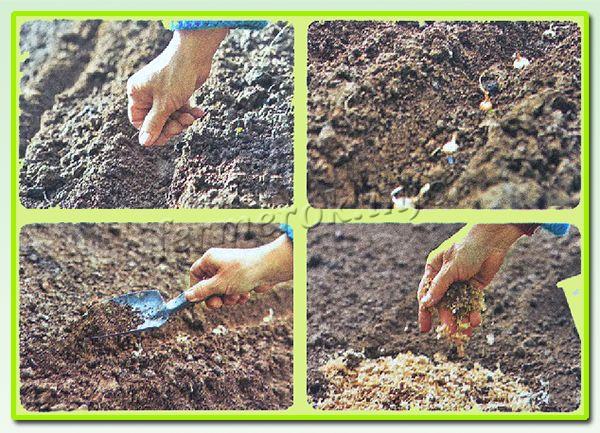

Planting onion sets in autumn has many positive aspects.
- Thanks to an early harvest, you can earn good money, because such an onion will cost much more than the usual autumn one.
- Such a bow "suffers" less from the onion fly, since by the time of its appearance (in the spring), it is already quite strong.
- Stored very well. In the summer, you can dry it well in the sun, there is little precipitation at this time, so there is an opportunity to thoroughly prepare it for long, winter storage.
- It is also worth noting that the autumn planting of onion sets saves time in spring, when there is already a lot of things to do in the garden.
It is also worth highlighting the shortcomings so that gardeners fully understand what to expect when planting onion sets for the winter. A small set does not produce a large turnip. From such crops, it is possible to collect at best a medium-sized tsibuli head. It's not always a bad thing, but it may not please everyone.
Greens from small seedlings are frail, weak at first, a little later, of course, it gets stronger, becomes more developed, juice and vitamins are gained, but at first, after its appearance, it is not recommended to cut it for food.
When are onions planted?
The exact dates of disembarkation are determined by the prevailing weather conditions and ground temperature. Onions are cold-resistant crops, but when planted in cold soil, they will shoot, which will reduce the quality of the crop.
On the other hand, the procedure must be completed when the soil still has a supply of moisture, the needs of which are high for onions at the beginning of growth. And the relatively long growing season of this culture does not forgive delay.
For the Moscow region, spring planting is recommended in the first decade of May. According to folk signs, the optimal time is determined at the beginning of the flowering of the bird cherry.
For Siberia and the Far East, the dates are shifted to mid and late May.
Planting nigella as the only stage in growing turnip onions
Basically, only residents of the southern regions are able to grow onions in one stage. Nigella is sown either before winter or in early spring (in early April). You should not plant seeds too often, because anyway, when thinning, the distance between the bulbs will need to be brought to 5 cm.
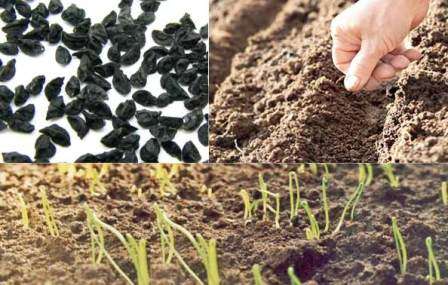

Mainly only residents of the southern regions are able to grow onions in one stage.
Some summer residents are not too lazy to grow turnip onions in a seedling way. In this case, planting in prepared boxes or a greenhouse is carried out in the first month of spring. The right time for transplanting seedlings into open ground will come in May. In fairness, it should be noted that growing onion seedlings is a rarity.
Preparation of planting material
Planting material (seedlings) stored in a warm way (18-20ºC at a humidity of 60-70%) does not require any procedures to activate growth processes. A week before planting, it is sorted out, rejecting dried, sprouted and rotting bulbs, and sorted, dividing into 2-3 fractions.
- It is recommended to sow the finest fraction (diameter less than 1.5 cm) at an earlier date, since it does not give shooters.
- Sowing from the middle fraction (diameter 1.5-2 cm) gives the best yield, but provided that the planting is done in a sufficiently warm soil.
- Large onions (more than 3 cm in diameter) can be used for growing onions on a feather or for obtaining turnips for canning, as they often give arrows, which affects keeping quality.
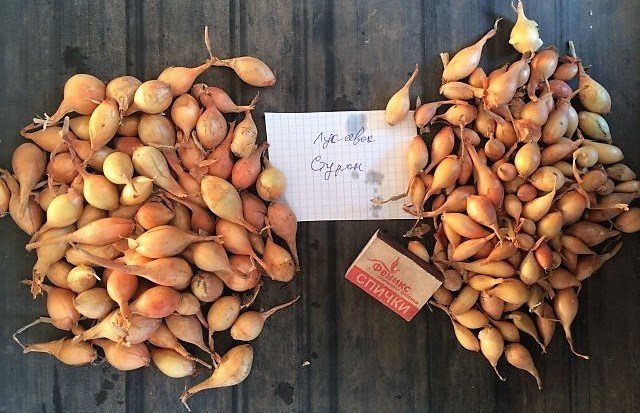

If the planting material was stored at low temperatures (in the attic, in the cellar, etc.), then 2 - 3 weeks before planting it must be transferred to a warm room and dried (the container with the seed can simply be placed near the battery, but not very close ).
The calibrated set is heated at 40ºC for 8 hours to destroy internal infection (can be put on a battery in a cardboard box). Before planting, the bulbs are soaked in hot water for 12-24 hours.Instead of water, you can use a weakly concentrated solution of complex fertilizers.
Immediately before planting, the planting material is treated with a pale solution of potassium permanganate or a fungicide (for example, copper sulfate) for 15 minutes. After processing, rinsing in clean warm water is required.
Some summer residents prune the "tails" at the set to accelerate germination. However, such a procedure damages the protective barrier and opens the door for infection, so it is better to do with soaking, which will halve the time to germination.
How to plant winter onions?
Winter varieties mean planting a plant for the winter. Therefore, let's find out how to prepare the soil, what fertilizers are best to apply before planting an onion crop, is it possible to plant seedlings a week before frost, how to care for a plant before mulching, and in general, when to plant onions in order to harvest green feathers in early spring, and get juicy turnip.
The plant should be planted one month before frost. This framework was not set for nothing, because if the sevok does not acquire a root system before the arrival of cold weather, the plant will die, and if green feathers make their way through the soil ahead of time, this can lead to early shooting. Therefore, it is so important to know the exact date of planting, given your climate. In areas with short summers, planting is best done in mid or late August.
In the southern regions, onions can be planted in the fall, but no later than mid-October.
In order not to disrupt the crop rotation, choose a non-shaded garden bed on the sunny side, where vegetables such as zucchini, tomatoes, cucumbers, peas, potatoes or legumes previously grew. Dig up the selected place with 6 kg humus and 20 g superphosphate per 1 sq. m. On each bed, form grooves, 5-8 cm deep, the distance between which should not be less than 25 cm.
Before planting the seedlings, sort through, sift out the spoiled material, divide the rest into piles by diameter, for sowing before winter, an onion with a diameter of no more than a centimeter is ideal, the rest of the material is subject to spring cultivation. Process the sevok in rose water with the addition of a potassium permanganate crystal or use boric acid. Keep the planting material in the prepared solutions for about 2 hours, then rinse them with water. Next, dip it into a growth stimulator and plant it in the grooves, leaving a distance of 10-15 cm between the onions. Sprinkle the onion with earth and pour plenty of water.
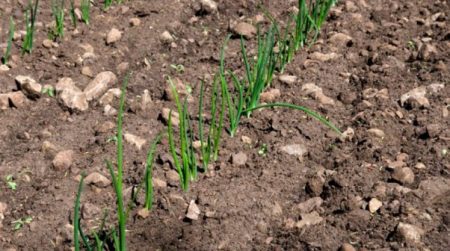

In addition to sevka, you can also plant seeds. To do this, fill the planting material with water for a couple of hours, then remove the seeds floating on the surface, they are empty and will not give a crop, dip the settled seed into a growth accelerator, transfer it to gauze or cotton material. Dry until friable and plant them in grooves to a depth of no more than 3.5 cm, leave a distance between sowing 5-10 cm.
Attention! Before winter, the material planted on time develops immunity to onion flies and to shooting.
Until late autumn, take care of the plant, water, loosen the soil, remove weeds, and in the middle of autumn mulch the topsoil. As a mulch, you can use: cut grass, spruce needles, compost, sawdust, nettles, bark, wood chips or other materials that you have at home. By the way, rotting straw is also well suited for mulching, it slows down the growth of the plant, but it is better to lay it on the garden bed after strengthening the root system.
Planting technique of onion sets
- On a leveled bed, shallow grooves are cut. The distance between the grooves should be 15-20 cm so that it is convenient to care for the plants.
- If the soil is not moist enough, the furrows are shed with water. Onions respond well to the introduction of wood ash and sand into the furrows.
- In a prepared bed, you can plant a processed seed. The bulbs are buried with the bottom down to the "shoulders", and then sprinkled with earth, so that a layer of 2 cm is obtained on top.Surface plantings will give earlier shoots, but it will not work to get a good turnip with this technique.
- Sevok is placed in a row at a distance of 6-10 cm (depending on the variety). Some summer residents advise planting it tightly with a "snake" in order to get not only bulbs, but also greenery from one garden bed.
- As the plants grow in the row, they are thinned out, removing the bulbs along with the feather. This method is convenient in a small garden bed, when there is confidence that it will be thinned out in a timely manner.
How to plant onions correctly so that there are large onions
Onions do not like clay soil. If you have just such a soil on the site, add peat or sand to the garden bed. The soil should be neutral or slightly alkaline in acidity. In the fall, acidic soil is deoxidized with dolomite flour. To grow a vegetable, choose a sunny place, but such that the sun shines on it all day. Infrared rays help the ovary of a larger fruit.
Prepare the bed in advance: dig up the soil by adding humus, compost, rotted manure to it. Do not forget about wood ash, the onion loves it very much. Ash is added to the soil when digging, or when planting, dipping a wet bulb into a dry and sifted substrate.
When planting a vegetable with turnips (heads), leave sufficient distance between the onions so that they grow large. The onions are planted in rows, the distance between them is about 15 cm. In a row, the distance between the bulbs is 10-15 cm. The onion is stuck into the ground shallowly, bottom down, slightly pressing down so that the tail of the onion is visible. If desired, the bulbs can be lightly covered with earth, but not necessary.
Sometimes all efforts are nullified when the onion fly attacks the bulbs. Plant carrots next to the onion bed. The carrot fly will scare off the onion fly and vice versa.
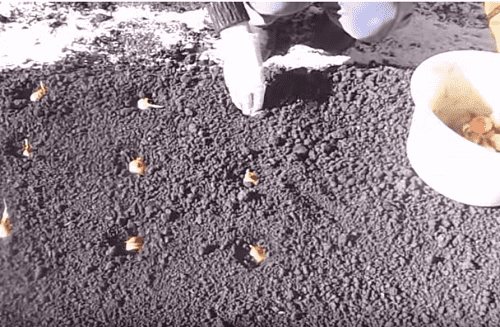

How to grow a head from seeds in one season?
Growing onions for a turnip in the Non-Black Earth Region, in the Far East and in Siberia takes place in a two-year culture, that is, first, a set is obtained from seeds, from which a turnip is grown the next year. In the southern regions and Central Russia, some sweet and semi-sharp varieties and hybrids can form a marketable bulb from seeds in one season. To get a turnip immediately from seeds, you need to carry out early spring and winter sowing or use seedlings.
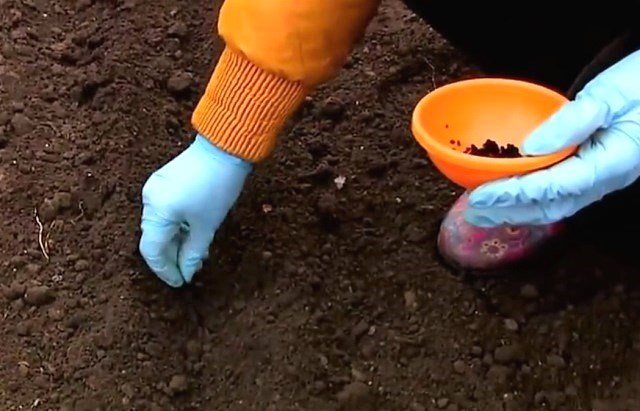

If weather conditions permit, then onions can be sown at the end of April directly into the open ground. To accelerate seed germination, they must be placed in warm water or a solution of growth stimulants for 1-2 days.
Sowing is best done in high ridges. Seeds are sown to a depth of about 2 cm, using a belt method with a distance of 20 cm between the belts. Thus, if the ridge is 1 meter wide, then 4-5 rows can fit on it. Seedlings need regular watering and double thinning. The first time is thinned out a few days after mass shoots, leaving an interval of 2 cm between the plants, and the second time - in the phase of 2-3 true leaves with an interval of 6 cm.
In winter, seeds are sown from late October to mid-November. Podzimny sowing is distinguished by an increased seeding rate (3 times) and mulching of crops with peat. Seedlings appear earlier, therefore, the bulb ripens earlier.
Mainly sweet salad varieties are grown through seedlings. Sowing seedlings in a heated greenhouse is carried out in early March. It is possible to grow seedlings at home, but only with sufficient lighting. When sowing in nutrient soil, seedlings only need regular watering. Plants are planted in open ground at the age of 55 days (they should already have 3 - 4 true leaves). To do this, choose a cloudy day or evening. They are planted with a row spacing of 25 cm, between plants in a row they are kept at 6 - 8 cm.
Growing onions on a feather at home
Who among us doesn't like pies, salad or okroshka with green onions? To prepare such dishes, many simply break off the outer feathers of the onions. But this cannot be done, the plant after that begins to grow worse. Therefore, to prepare delicious dishes with green onions, plant the bulbs specially on the feather. For this purpose, small turnip onions or sample sets are suitable.
For growing greenery, choose an area with fertile land in a well-sunlit place. The bulbs on the feather are planted at a distance of 5 cm from each other. This is quite enough. When the green feathers grow 10 cm, they can already be used for food. You do not need to pluck feathers for food, pull out the entire onion at once. And not in a row, but after 1-2 onions. This creates better conditions for other plants for further growth.
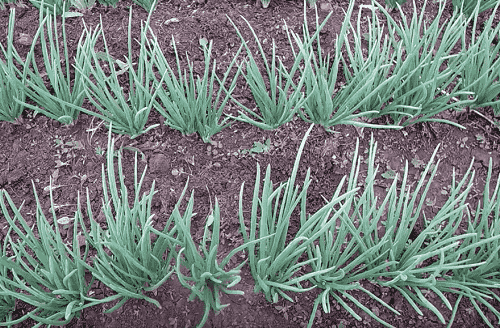

The best varieties and hybrids
Onions are very sensitive to the length of daylight hours, therefore, for planting, you need to choose only zoned varieties or achievements of local selection. Varieties bred in the northern regions, in the south, with a short daylight hours, may not form a bulb at all. When creating your collection of favorites in the garden, include representatives from different groups in it.
Spicy varieties are distinguished by high keeping quality and productivity, semi-sharp and sweet ones have good taste.
A guaranteed yield can be obtained by planting old local varieties. In different regions, Strigunovsky, Rostov local, Bessonovsky, Spassky, Mstersky, Pogarsky, Timiryazevsky received popular fame. They are zoned quite widely and are known among gardeners throughout Central Russia and beyond.
Of the widely zoned spicy varieties and hybrids worth noting Golden Semko, Centurion and Stuttgarter rizen.
- Golden Semko - early maturing with a large rounded golden bulb, which is formed in one season immediately from seeds; gives a high yield; cultivated in all regions of Russia.
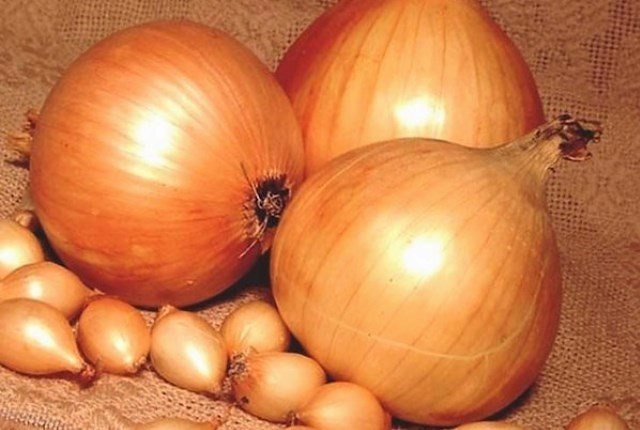

- Centurion - a little shooting hybrid with a medium early ripening period; bulbs are golden, medium in size, slightly elongated; resistant to disease.
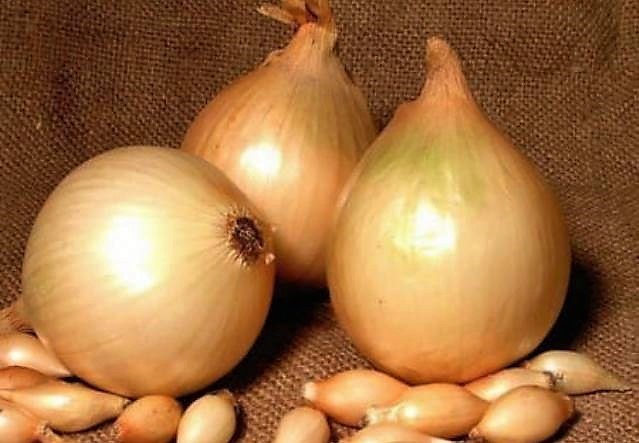

- Stuttgarter rizen - mid-season with large, slightly flattened bulbs.
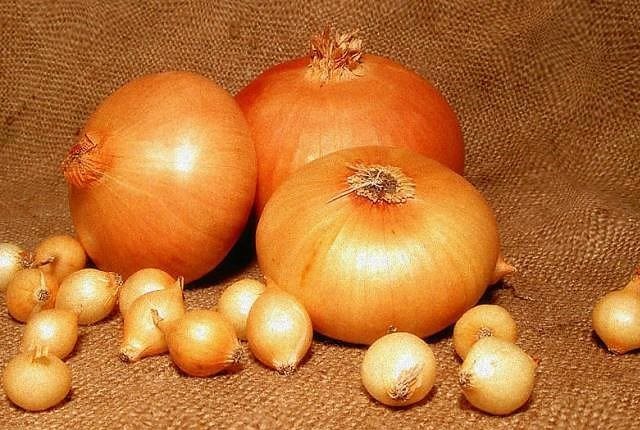

Semi-sharp gradeand for Central Russia: Zolotnichok, Odintsovets, Sputnik, Myachkovsky 300, Red Baron.
- Spool - medium early with golden rounded bulbs.
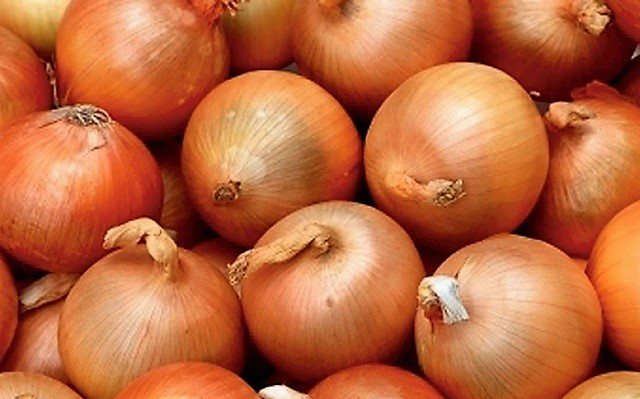

- Myachkovsky 300 - early high yielding with flattened yellow bulbs of medium size; suitable for growing turnip directly from seed.
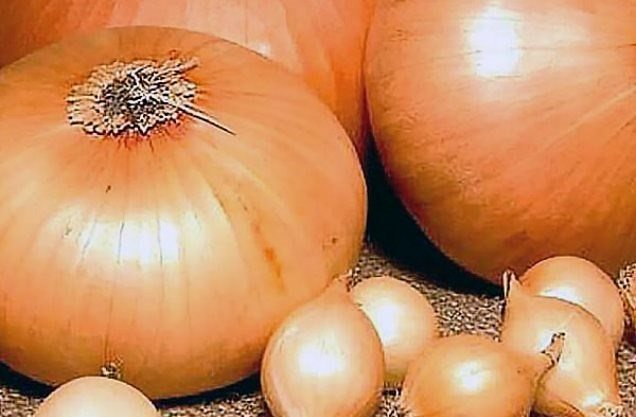

- Red Baron - early ripening; dark purple bulbs, rounded, weighing up to 150 g.
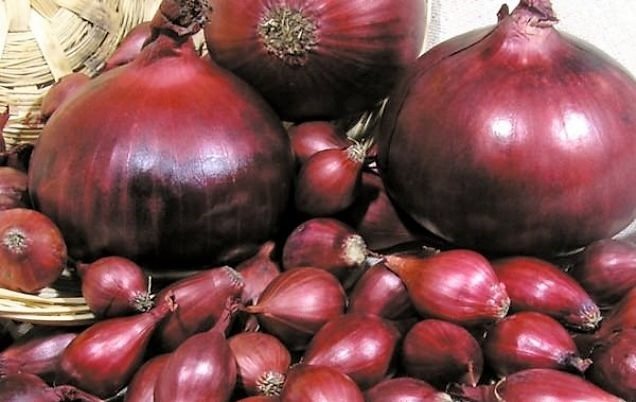

Good varieties and hybrids of sweet onions: Exibishen, Ritmo, Comet.
- Exibition - medium ripening with large oval yellow bulbs; suitable for growing in annual crops from seeds; has a high yield, but low keeping quality.
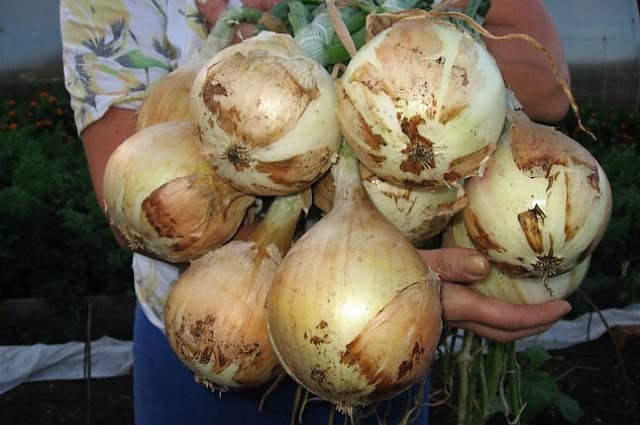

- Comet - late ripening with large white onions; resistant to diseases and suitable for long-term storage.
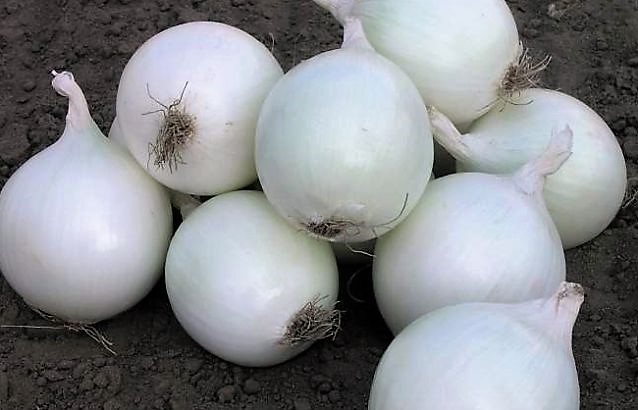

It can be difficult for novice gardeners to decide which onion to plant on the head. After all, not only taste and yield are important here, but also keeping quality and resistance to diseases. Moreover, the same variety in different soil and climatic conditions can show different results. Therefore, select up to 5 different varieties to highlight your favorites in 2-3 seasons.
How to choose a bow for planting
On sale there is a set, selected by the size of the bulbs, but which one is better to use for planting in spring on the feather and head, now we will understand, since the diameter directly affects the final result.
Size classification of sets:
8-14 mm - small, should not be used for spring planting, will lag behind in development by 3 weeks.
15-21 mm - medium, very well suited for spring planting on the head and more resistant to shooting;
22-24 mm - large, suitable for growing on feathers, as it has an early ripening;
25-30 mm - very large, appeared recently, but only suitable for growing on feathers.
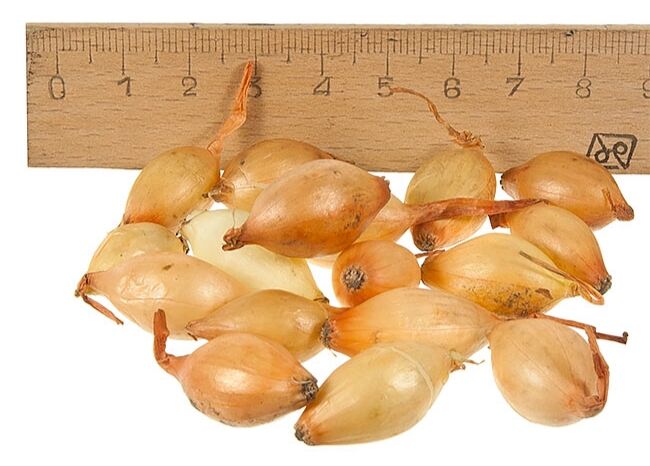

There are other criteria to help you make the right choice. In appearance, the bulbs should not show signs of deformation and damage, as well as suspicious stains, should be dense and dry to the touch (slight moisture is allowed when buying), dry at home by sprinkling a thin layer on the newspaper.
How to choose the right variety?
To grow a good harvest, we select the right variety, taking into account the climatic characteristics of the region and the composition of the soil.
When buying seed, you need to pay attention to its variety and ripening time.
It is enough to add 7 - 10 days for the germination of the seedlings and you get the estimated date of planting. There are many different varieties with varying growing seasons.
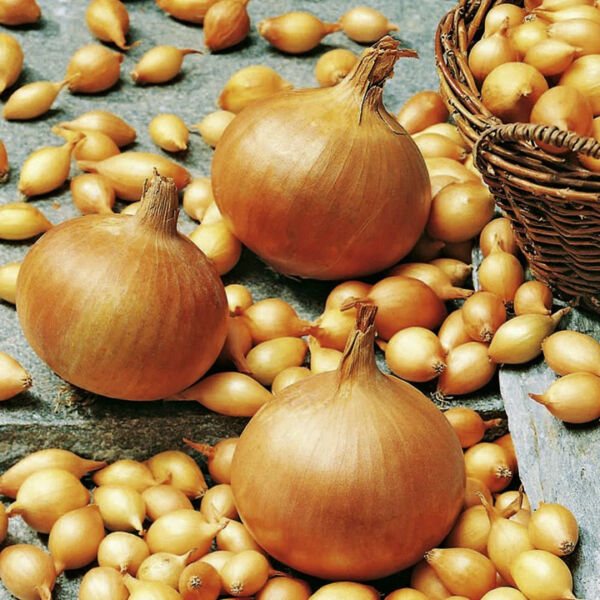

There are varieties:
- early (up to 90 days),
- mid-season (100-120 days)
- late (over 120 days).
Plants can form one or two bulbs or be multi-nested.
There are sweet varieties that are delicious in salads and marinades.
Semi-hot and spicy give the dishes an original taste.
There are other criteria: cold resistance, yield, disease resistance, yield and keeping quality.
The best harvest is obtained on loose and fertile soils, provided that a zoned variety is selected.
Popular early ripening onion varieties
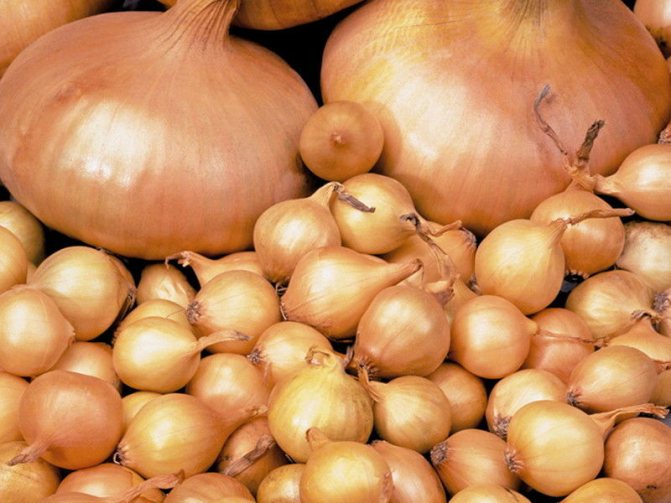

"Stuttgarten Riesen" - a popular early variety of German breeding, zoned for the Volga-Vyatka region, forms only one bulb of large (up to 95 g) size and flat-round shape with a brownish-golden color of outer scales, has a pronounced pungent taste and good yield, good stored, but unstable to diseases: cervical rot and powdery mildew.
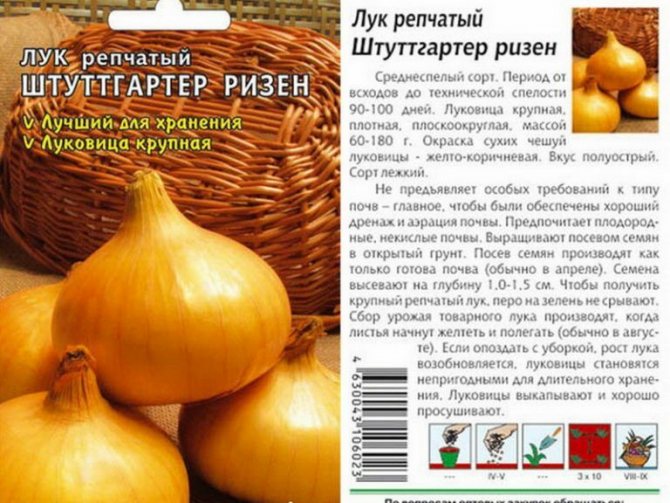

"Strigunovskiy local" - a spicy variety of domestic breeding, tested for decades, is suitable for all types of processing, good and fresh, the weight of the fruits reaches 80 g. and in cool climates, it is perfectly stored.
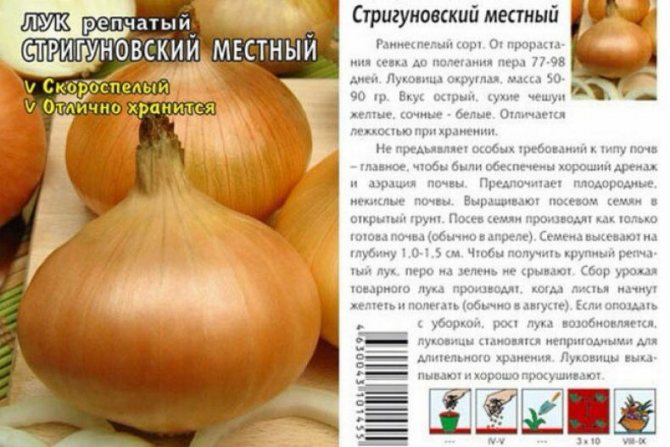

Farmer Early is an ultra early two-germ variety with fruits of a pungent taste, dense head structure and classic round shape, high-yielding, versatile in use, resistant to the vagaries of weather and diseases, excellent storage.
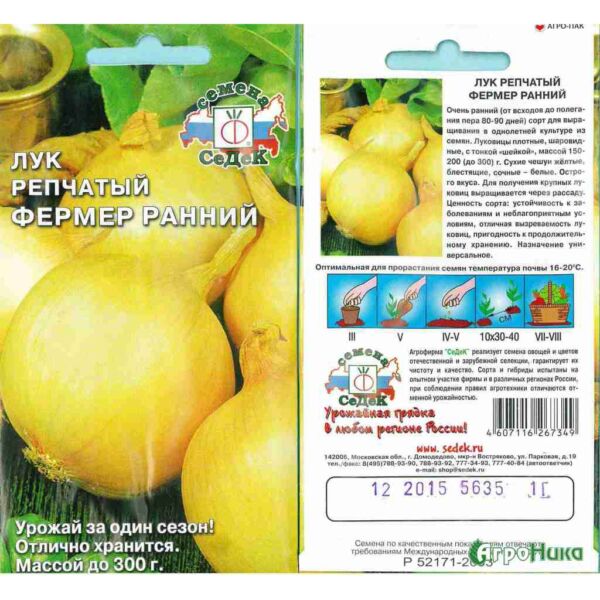

"Hercules" is a mid-early hybrid. From planting seedlings to mass lodging of leaves 70-80 days. The head is round, weighing 130 g, spicy cus. It is characterized by rapid growth and bulb formation. Resistant to shooting, suitable for long-term storage.
"Rostov local" - an early early ripening variety, bred in the Yaroslavl province, to this day remains one of the best biennial species for cultivation in the northern regions of Russia. Round-flat golden bulbs ripen in a period of 75 to 90 days, the advantage of the variety is a long shelf life.
Mid-season varieties
"Golden" - is distinguished by the flat-round shape of golden-pink heads. Sometimes the fruit can be elongated and have a brownish outer scales. The inner juicy part is always snow-white. The variety has a characteristic pungent taste and high yield. A feature of the variety is its adherence to areas with a warm climate.
"Supra" is a mid-late variety, grown as an annual, dark golden round and dense heads can reach 250 g in weight (if grown through seedlings), is not afraid of diseases and pests, is perfectly stored without losing its taste and appearance, adapts well to unfavorable weather conditions.
"Alvina" - mid-season, which is grown as a biennial or as an annual, pleasant, semi-sharp taste and rather large, fruitful with excellent keeping quality.
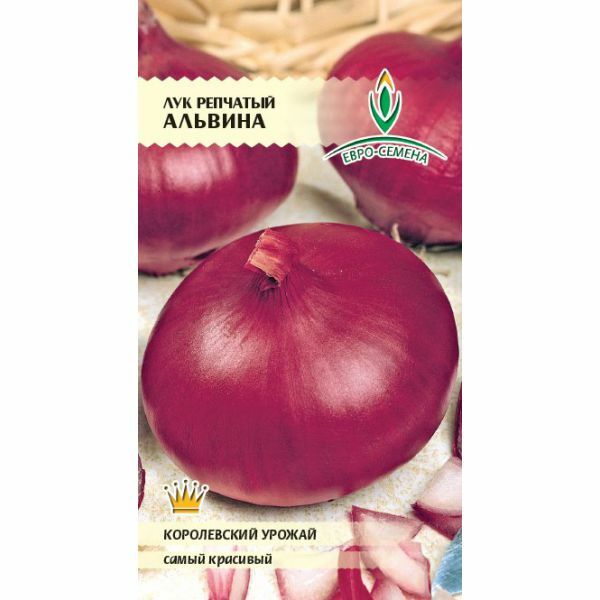

"Sturon" is the result of the selection of "Stuttgarten Riesen". Unpretentious in cultivation, ripens in 100-115 days. The turnip has an elongated shape and weighs about 200 grams.
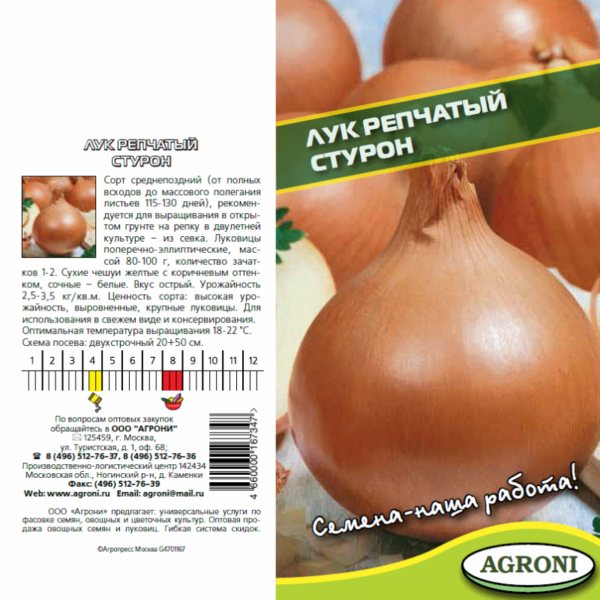

The best late varieties of onions
"Snowball" is one of the best white varieties of late-ripening onions, worthy of attention due to its unpretentiousness and resistance to natural whims, it keeps well and is resistant to shooting.
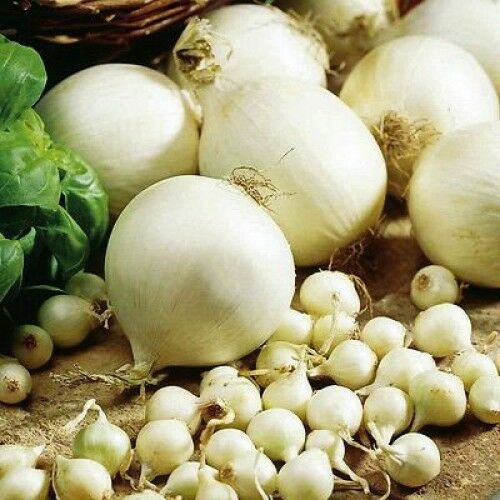

"Farmer Late" - late ripening, can be grown as an annual crop, obtaining dense dark golden bulbs weighing up to 250 g. When grown through seedlings, this parameter can reach 350 g, high yield, good disease resistance, the possibility of long-term storage.
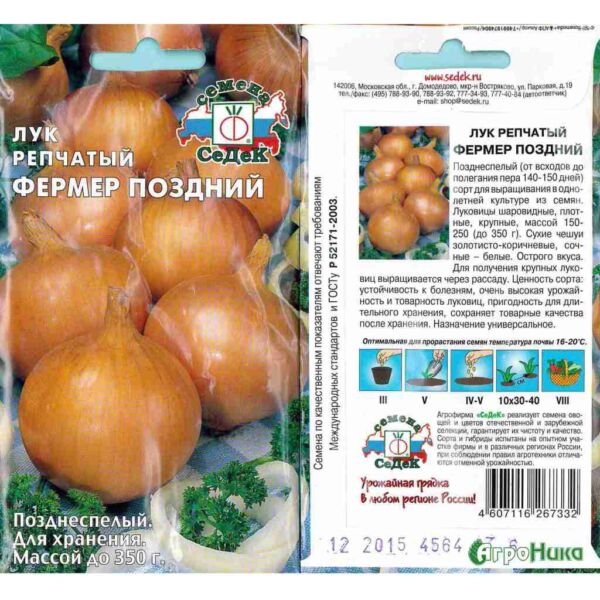

"Senator" is a medium late variety, round, even and dense bulbs, which weigh up to 200 g, it is recommended to grow through seedlings, good tolerance to weather surprises, excellent resistance to fungal diseases.
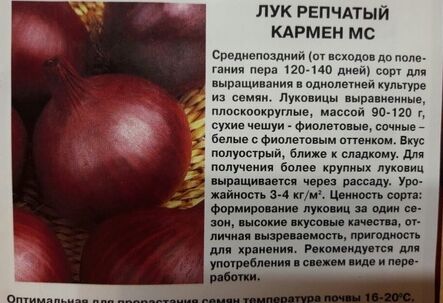

It is not difficult to grow onions, but sometimes it takes two years to get the crop, and with proper agricultural technology, collection and subsequent storage, the vegetable is able to maintain its presentation until the next harvest.
Shallot
Biennial plant. It is also called a shrew because a large nest of several onions is formed from one set. Depending on the variety, such a nest can have 5-20 bulbs.
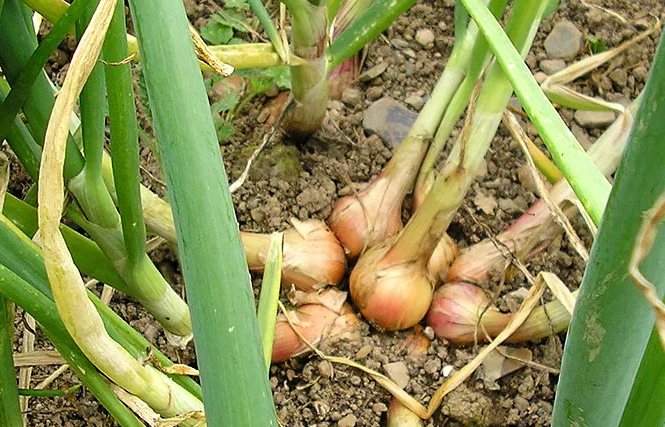

When sowing seeds in the first year, seed onions (sets) ripen, which are planted in the next season to obtain a harvest.
Green, tender shoots are an excellent salad ingredient. Its greenery can be enjoyed all spring.
This species loves organic-rich soils. It is planted in the spring in cool ground, at a distance of 20 cm from each other. An autumn planting will allow you to get a crop 2-3 weeks earlier than a spring planting.
The subtleties of plant care
Young seedlings need regular (1-2 times a week) and moderate watering, followed by loosening the row spacings to restore root aeration. With the beginning of the formation of the head, the frequency of watering is reduced, and a month before harvesting, they are not carried out at all for the successful ripening of the bulb. However, in severe drought, it is recommended to spray with a small amount of water.
Weeds pose a serious threat to seedlings, so weeding must be timely. Hilling plants and close loosening are not allowed. Weeds in a row are removed by hand to avoid damaging a bulb with a weak root system.
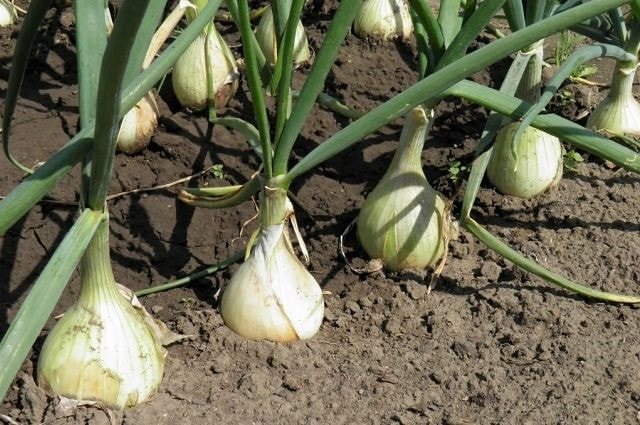

Many summer residents are advised to carry out one or even two top dressing per season. However, there is no need for them on fertile soils filled with organic matter since autumn. On poor soils, the first feeding with liquid organic fertilizers (horse manure, bird droppings, mullein) is carried out about a month after planting. The second feeding is carried out during the period of turnip formation, using phosphorus-potassium fertilizers.
To exclude root burns, top dressing is carried out after moistening the soil and before watering.
Sowing onions in spring
- The top layer of soil in the garden bed is loosened with a rake. Break up lumps and remove weeds;
- Cut grooves with a depth of 5 to 10 cm. Between the grooves, leave a distance of at least 20 cm;
- Water the grooves with slightly warmed water. To warm up the water, it is recommended to put the barrel in a sunny place for a day;
- The sevok is laid out in grooves with an interval of 10 cm. For small varieties of onions, this distance is reduced, and for large-fruited, on the contrary, it is increased;
- Sprinkle the bulbs with light soil. Above the bulbs, the soil layer should be about 3 cm;
- If the soil is wet, then the first watering is carried out after 5 days. When planting seedlings in dry land, watering is carried out immediately after planting.
All about landing, see the video:
Dates of spring planting of onion sets
Real summer heat is not necessary for growing onions: adult onions can tolerate even severe frosts. Therefore, it is planted very early, so that by the onset of a long daylight hours it has already taken root and started growing. It is a large amount of sunlight that is required in order for the bulbs to mature well, and then go into a dormant state in time and be stored for a long time.
At the same time, planting sevok as soon as the snow melts is also risky. The bulbs planted in the cold ground en masse go into the arrow, and it is not possible to get a high-quality harvest of turnip onions. The best thing is to choose the moment when the soil warms up to about 10 ° C, but do not tighten it longer. Since there is no need to look back at the possibility of frost in the case of onions, it is at this moment that it is worth finding time to plant onions on a turnip. As a rule, in most climatic regions, the dates for planting seedlings fall on certain days of April or the first half of May.
Those gardeners who check their plans with the Lunar calendar can be calm: there are not so many forbidden days for planting onions (these are only the days of the new moon and full moon). And if you choose the best days, then you should know the following. If onions are grown to obtain a feather, then the optimal dates are on which the night star is under the signs of Water. If you plan to get high-quality onions, planting should be done during the period when the Moon is under the signs of the Earth.


How to properly plant a bow so that it does not shoot
The main reason for shooting a bow is improper storage and, in particular, storage in cold conditions. Of course, it can be stored at + 3-4 ° C. But then, before planting, deciding to warm up the onion, do not immediately put it on heating from a cold room. Most likely, such a bow in the garden will go into the arrow.
To prevent this from happening, bring the bulbs from a cold room, let them get used to a warmer room a little. Take your time to warm it up. Let him first lie in an apartment in a dry place for a day or two, only then send him for warming up at a temperature of + 40-45 ° C.
Dependence of the planting time on the region
In general, if we consider the entire territory of our country, the optimal time for planting sets for obtaining turnip onions is about a month and a half. So, in the very south, these works begin in the last days of March and finish in the first ten days of April. In the middle lane, in particular in the Moscow region, such work can begin at the end of April and finish by mid-May.
The northwestern regions (for example, the Leningrad region), as well as the Urals and Siberia, are very heterogeneous in terms of the weather: in some regions, even by the end of May, the soil may not yet thaw completely. It happens that onion planting is postponed to the beginning of summer, but basically they are trying to cope with this work by the beginning of the last decade of May.
Reviews of gardeners
Tanyukha
to get a large onion, you need just nothing: plant seedlings or seedlings in a well-prepared bed on time, do not thicken the planting, water well and feed well in the first half of the growing season
smelix
I was taught to grow onion turnips like this: to wet the seedlings a day before planting. To avoid peronosporosis, I soak it in Maxim. The bed should be loose, with good light soil - I think this is 50% success.
Soil selection and preparation
Onions grow well only on light soils, but not quite on sands: light loams or sandy loams are optimal. He also has a great attitude to planting on black soil. Even the close occurrence of groundwater is not an obstacle, as long as it is not swampy areas. The soil for onions should be moderately moist and by no means acidic.
In case of increased acidity, preliminary liming is necessary with chalk, slaked lime, dolomite flour, etc.
Onions should be allocated areas that are well lit by the sun: even the shade from fruit trees or a fence will negatively affect the harvest. Onions are very good at high doses of fertilizers, but it should not be fresh manure: in this case, a beautiful feather will grow, but the bulb, although large, cannot be stored for a long time. But for a year, under the previous crops, the introduction of manure is justified.
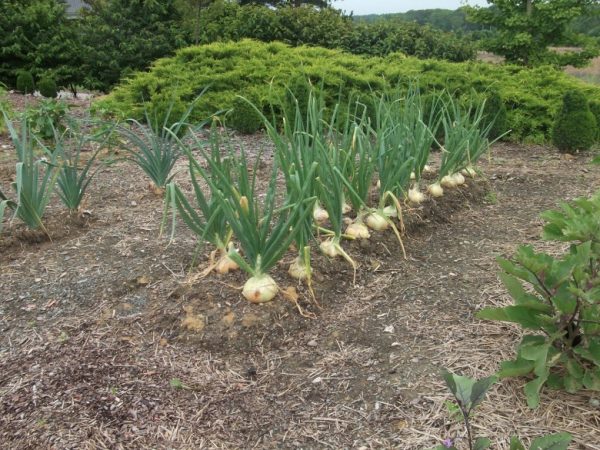

The onion beds are prepared in the fall, while there is time. For digging with the removal of weeds, at least one and a half buckets of humus or good compost, a half-liter can of wood ash and up to 80 g of azofoska are applied per 1 m2. In the case of clay soils, add up to a bucket of river sand at the same time. In the spring, before surface loosening of the soil, it is advisable to add another handful of halls per square meter. After that, the bed is leveled and tamped a little.
Chinese way of growing bulbs
In addition to the traditional cultivation method, there is also a Chinese one. Growing large onions from planting material was invented by the Chinese by forming ridges, not ridges. The ridges are formed so that they rise 15–20 centimeters above the ground, with a distance of at least 30 centimeters between them. Instructions for planting onions in the Chinese way:
- The prepared sevok is immersed into the ridges 2-3 centimeters deep, covered with earth, and compacted a little.
- The comb is poured with water.
- Then the soil is loosened.
It is best to plant onions in the Chinese way early in the morning to protect them from the sun's rays. This planting method allows you to grow a rich harvest of large, fully ripe and fully formed bulbs.
Sevka preparation
Where does the onion set come from? It is grown from seeds, the so-called nigella, just the majority of summer residents do not think about it. This is not a very simple matter, therefore, most often sevok is bought at the market or in a store. The easiest way, of course, is to buy a set in the spring, since its winter storage should be carried out under certain conditions: in a small layer at a temperature of about -2 ° C, or, conversely, in a room, but not hot. But storage at 0 ... 14 ° C is fraught with the fact that the sevok, planted in the garden, en masse goes to shooting.
The seedlings bought in the spring are sorted out in advance, discarding all dried, naked, damaged bulbs. It is better not to plant those that had time to germinate during storage. The most valuable is the 1st class set: these are onions with a diameter of 15-22 mm and a mass of about 2-3 g. A larger set goes for the feather: it often shoots and does not form a marketable bulb. Small sets, with a diameter of about 1 cm, are best planted before winter, around the end of September.
How and when to plant sevok
Planting is carried out in the spring, as soon as stable, warm weather is established and the soil warms up well, in insufficiently heated soil, below 12-14 ° C, the vegetable can go to the arrow, therefore it is recommended to start work when the threat of frost disappears, the time for planting is chosen at end of April - early May. The delay in sowing also affects the future harvest, since due to high temperatures and lack of moisture, the bulbs develop much more slowly, my grandmother advises to plant as soon as the bird cherry blossoms (at the beginning of May).
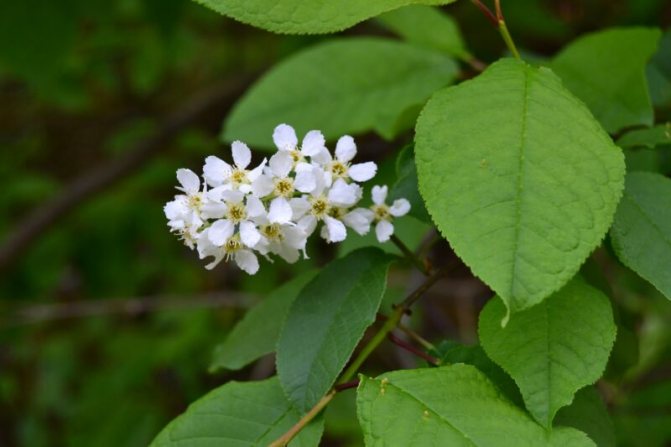

In the Central lane (in the Moscow region), planting onions is best done in May.
When planting the seedlings, we deepen them flush with the soil and squeeze them well around the bulb, pour them with warm water and cover them with a non-woven material.
Onion plantings need timely loosening, watering and feeding.
Correct onion planting - the guarantee of a good harvest. All novice gardeners are wondering how to grow a good harvest? There are, of course, secrets, and we will reveal them for you.
It is recommended to plant sevok in a well-heated ground to a depth of about 6-10 centimeters and be guided by the weather.
Planting the prepared sevka is as follows:
- before planting the planting material, roll the surface of the bed slightly, you should get a flat surface;
- after that, we form shallow grooves, their depth should be about 2-4 cm (depending on the size of the head), at a shallow depth, the root system does not develop well and the crop will be shallow and not tasty;
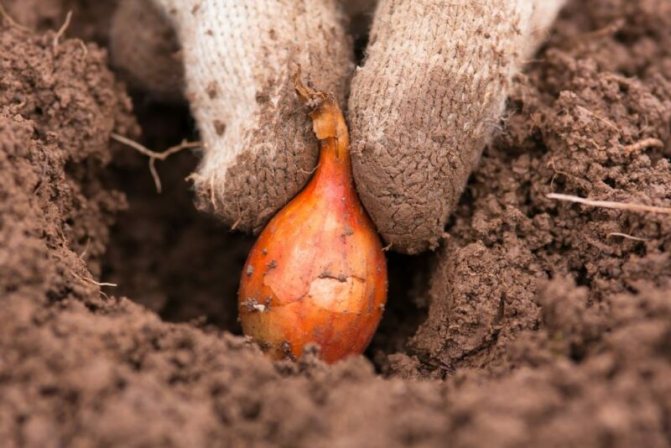

- the distance between furrows should be approximately 20-25 cm; between sets 8-10 cm;
first, small onions should be planted, the diameter of which does not exceed one centimeter (they will not form an arrow);
- after 1-2 weeks we plant larger specimens (d. 1-2 cm), if planted simultaneously with small ones, then the seed will go to the arrow;
- then cover the heads with earth (2-3 cm) from above and compact the earth around the bulbs.
Planting is completed and it remains to properly water and feed our plantings.
Soaking the onion sets before planting
After the bulkhead, the selected good set is freed from excess clothing. The husks that do not adhere well to the bulbs, at this time it makes sense to remove. Soaking the onions before planting is highly desirable, especially if the soil in the garden has already begun to dry quickly and rain is rare.
Sevok is kept in water for 1–2 hours with a temperature of 35–38 ° C. Soaking is often accompanied by pre-fertilization, adding trace elements to the water or simply potassium permanganate at a concentration of about 1 g / l. Some lovers do not take out the onion after the water has cooled down, keep it in it for up to two days.
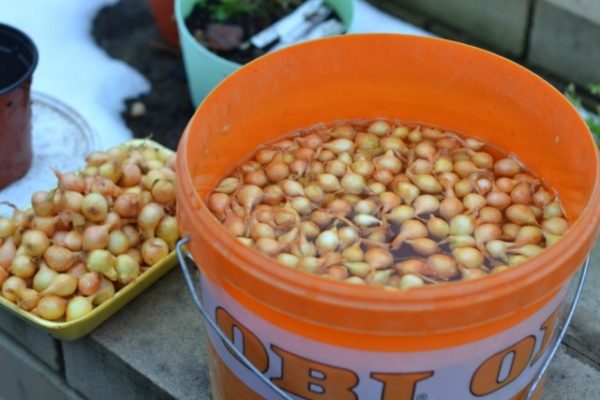

Experts advise soaking in a different way, but in this case, care and attention is needed. Immediately before planting in the garden, the onions in a bucket are poured with water at a temperature of 65–70 ° C. It is kept at this temperature for only two minutes, after which it is quickly cooled with cold water. They say that after such processing, the onion will definitely not be shot, but it cannot be sorted out with the water temperature and soaking time, otherwise sevok can be ruined.
How to store sevok before planting in spring in an apartment
When you are looking forward to the start of a new summer cottage season, spring, it is difficult to refrain from buying a set. And very often the question arises: "What to do with this mesh next and how to keep it before planting in the ground?"
In the absence of a cellar, you can store the seed in a warm way at home. The place to be ventilated must be dry. Desired temperature is from 18 to 22 ° C. Desired humidity 65-75%.
You can check the humidity in the room with a HYGROMETER.
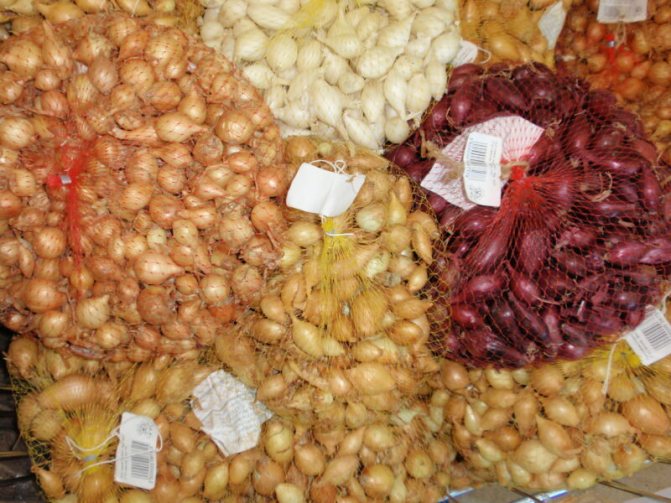

Preventive treatment of seedlings from diseases and pests
Even if microelements are not added to the water during the soaking process, it is still better to use the simplest chemicals before planting the onions in the garden. At least, gardeners often soak the seedlings in a solution of complex mineral fertilizer. For this, for example, a spoon of azofoska is dissolved in 10 liters of water and the seedlings are bathed in this solution for 8-10 hours. Even this simple procedure increases the resistance of the set to disease.
A slightly more serious chemical used to prevent fungal diseases is copper sulfate. A teaspoon of the drug is dissolved in 10 liters of water and the seed is kept in it for 5-10 minutes. It is more effective, but less safe to use chlorophos (2 g / l): after such a bath, which lasts up to 30 minutes, the bulbs must be rinsed in water and dried a little.
The best way to prevent pests, especially onion flies, is a solution of birch tar (the concentration of the solution is a tablespoon per liter of warm water). The set is kept in this solution for 20-30 minutes. It is undesirable to use more serious chemicals in private households.
When to cut onions in 2019 according to the Moon calendar
Many vegetables have become accustomed to the lunar calendar when determining the landing time. Despite the fact that onions are considered unpretentious, the best way is to plan a dressing for one of the pleasant days of the calendar.The following days will be pleasant for making onions in the spring of 2019 according to the Moon calendar:
6-8, 11-1Z, 2Z-26, 28 February;
10-12, 15-17, 2З-25, 27-30 March;
2-9, 11-15, 24-27, 29, 30 April;
1-4, 12-14, 21-24 May.
If, for some reason, there is no possibility of planting the onion on one of the pleasant days, there is no trouble. The final procedure can be carried out on any other day, as long as he does not enter the number of unpleasant ones on the Moon calendar.
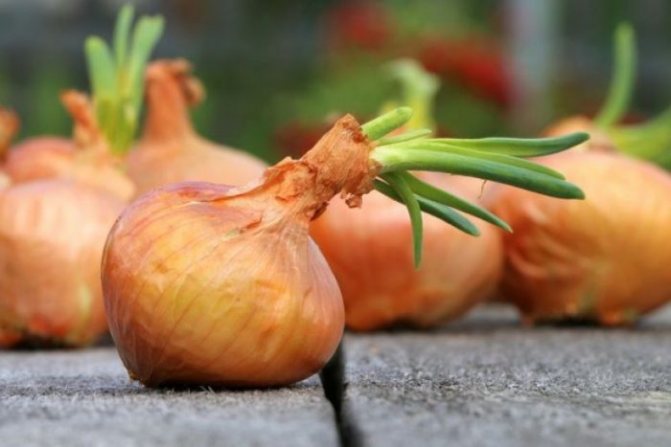

According to the Moon calendar, the following days will be uncomfortable for making onions in 2019:
February 4, 5, 18 and 19;
3, 4, 17, 18, 21, 31 March; April 5, 13, 14, 15, 19; May 5, 11, 12, 24, 25, 31.
Pruning onion sets before planting
With regard to onion pruning, it is worth saying that:
- Firstly, no pruning of the seedlings before planting it in the garden is necessary. If the onion has been soaked according to the rules, then in the garden it will have enough strength to break through the husk, and the feather will rise perfectly.
- Secondly, the pruning itself, which is sometimes used, only pushes the bulb to the beginning of growth, but does not affect the subsequent life of the onion at all.
- Well, and thirdly, if there is a desire to help the onion, then only the dry tip at the very top and, in addition, the dried part of the bottom can be cut off.
It is categorically not recommended to touch the living, wet tissues of the bulb when pruning: these inexperienced gardeners only weaken the sevok. After removing the entire top of the bulb, cut "alive", the leaves, of course, will appear, but the bulb will hurt for a long time and is unlikely to give a good harvest.
Vegetable propagation
To find the answer to the question of when to plant onion sets in open ground and still get a good harvest, you should familiarize yourself with the information below:
- select healthy specimens from the previous harvest - the bulbs should be medium in size, smooth and firm to the touch, with a slight sheen;
- wait for the planting date: warm days (15-20 degrees) in May and well-warmed and moist soil;
- cut off the dry crown - the procedure promotes accelerated germination;
- put in water mixed with fertilizers, growth stimulants, heated to 45 degrees at night;
- after feeding, put the bulbs in a solution of potassium permanganate, for disinfection, in a ratio of 1 tbsp. l. substances per 10 liters of water for 180 minutes;
- rinse the planting material, removing excess solution;
- take the future bow to the dacha;
- prepare trenches using the same technique as in the first year;
- plant seedlings, keeping a distance of 10 cm between them and completely immersing them in the ground;
- close the trenches with a layer of ash and earth;
- water abundantly.
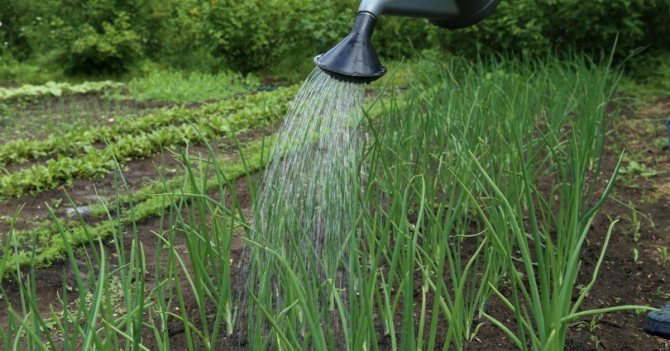

Watering onions
Before landing, it is recommended to focus not only on the lunar calendar, where favorable dates are considered:
- 04-26.04;
- 05;
- 06-19.06;
- 07-16.07,
but also on the weather, as it plays a major role in gardening.
Interesting. According to popular belief, a favorable time for planting onions comes when the bird cherry begins to bloom.
So that the seedlings after planting give a good onion turnip and do not become a peduncle with arrows, it is necessary to maintain a positive temperature during storage in the room, avoiding its lowering and introducing the plant into a stress state.
Planting process step by step: scheme
The onion planting scheme can be chosen by the gardener himself, based on the geometric dimensions of the garden, but, in principle, everything is very simple here. The most commonly used tape scheme. A distance of about 20 cm is maintained between the rows, and between the bulbs in the rows, depending on their size. It is customary to plant the smallest onion (about a centimeter in size) every 5–6 cm, and a large one up to 10 cm.


There are many schemes for planting onions, but in any case, they are placed quite tightly.
Sevok is planted to a depth of 3-4 cm. Roughly it looks like the very tip of the bulb's neck is barely visible above the soil surface. If some of them are not visible at all, it is not scary, but the bulbs should not stick out much from the ground either. If planted too shallow, the growing bulbs will almost completely crawl out of the ground, which will stop their growth when the weather is too dry or very hot.If the seeding is too deep, growth will also slow down, and at the end of the garden season, the bulbs may not have time to ripen properly, which will lead to poor crop preservation.
The technology for planting sevka in a pre-prepared bed is as follows:
- With any suitable tool (you can use the corner of a hoe), shallow grooves are made according to the desired pattern, usually every 20 cm and better if in the west-east direction.
- If the soil is heavy, river sand is placed in the furrows in a layer of about 1 cm, and wood ash is lightly sprinkled on top of it. Some gardeners, who did not process the bulbs before planting, water the furrows with a weak solution of Fitosporin.
- Sevok is planted at optimal distances in prepared grooves, slightly pressing it into the soil (you should try not to damage the outlined roots). The planting depth is chosen such that, after backfilling with earth, the tops of the bulbs rise only slightly above the ground.
- The planted sevok is covered with soil, after which the soil in the garden is leveled, for which it is convenient to use a conventional rake.
- Planting is carefully and abundantly watered with water from a watering can with a strainer.
Up to the growth of greenery with plantings, nothing is worth doing, unless the weeds begin to rage. They must be carefully pulled out by hand; the hoe comes into operation after the rows are marked.
Onion-turnip - care after planting in open ground
After planting in the ground in dry weather, planting is watered daily with warm water. Watering is best done in the evening. Watering in the morning hours, water droplets remain on the feathers, which, without drying out, play the role of lenses in sunny weather. Because of this, burns may remain on the feathers - yellow spots.
Loosen the plantings regularly, this will help the air to penetrate to the roots, and also get rid of weeds. And best of all, after loosening, mulch the plantings. Mulch will prevent weeds from growing, prevent the soil from drying out, and will not form a crust on the ground after watering.
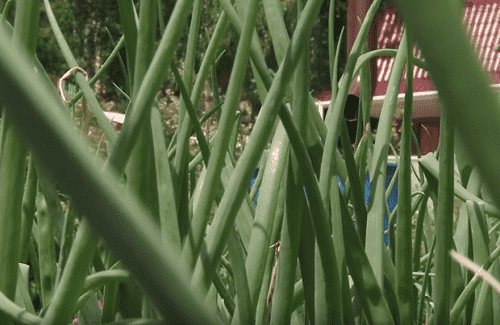

Onions in the summer need additional feeding.
1st feeding carried out 5-6 days after planting in the ground with nitrogen fertilizers. Nitrogen contributes to the growth of vegetative mass, which is necessary at first for the development of a powerful root system. Urea is suitable as a mineral supplement. It is diluted at the rate of 10 g per 10 liters of water. If you have liquid organic fertilizers, use them by diluting in a ratio of 1 liter of solution to a bucket of water. Pour under the spine or from a watering can. If watering from a watering can, be sure to pour clean water on the feather afterwards.
2nd feeding spend 2 weeks later. It is carried out with a mixture of mineral fertilizers: superphosphate - 30 g, urea - 10 g, potassium sulfate -5 g. All components are diluted in 10 liters of water. Herbal infusion is well suited as an organic fertilizer. They take it 1 liter per bucket of water.
3rd feeding held at the end of June with the same composition as the 2nd. Top dressing with potassium and phosphorus is very important for the development of the bulbs, they contribute to the growth of the bulb mass.
Predecessors and compatibility
Onions almost do not care what grew in the garden before him, as long as the soil remains fertile. The best preceding vegetables for onions are cucumbers, tomatoes, cabbage or potatoes: these are crops for which fairly large amounts of fertilizer are used. For various reasons, it is undesirable to plant onions after carrots, radishes and sunflowers. Well, following the rule of crop rotation, after all types of onions, as well as garlic.
Onions also have almost no unwanted neighbors. Only legumes (peas and beans) are considered as such, and onions themselves are not the best neighbor for any types of cabbage. But not only the best, but also an obligatory neighbor for onions is carrots. They mutually protect each other from pests: first of all, from onion and carrot flies. Potatoes, cucumbers, tomatoes, beets are also excellent neighbors for all types of onions.
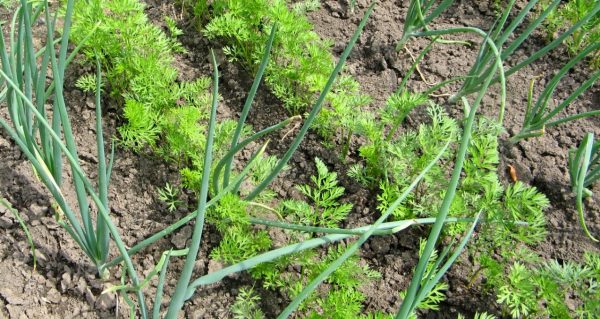

Onions with carrots - classic neighbors in the garden
Summer residents, who do not keep the plot to provide themselves with vegetables, plant a small amount of onions: they make supplies for the winter in the fall on the market.But even a small garden bed, which is obligatory in any garden, must be planted on time and correctly. This is not at all difficult to do, but in the summer you will have greens and a few bulbs at hand at any time.
Fight disease
If the rules for processing, planting or care have been violated, the bulbs will get sick with fungal or bacterial ailments.


Protection of onion plantings from diseases and pests
To save the bulbs from this, prophylaxis of the already planted seed is carried out. When the feathers become 15 cm in size, they are treated with copper sulfate with grated laundry soap (1/2 tsp. Vitriol per 1/2 s. L. Soap and 5 liters. Water). Another good protection is provided by dusting with tobacco sticks and wood ash.
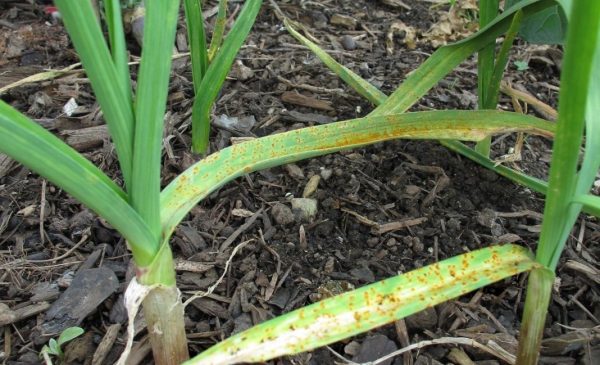

If it was not possible to save the onion from the disease, do not delay the treatment. Better to carry out prevention.
Weeding
Weeds can pose a significant threat to young plants, so they do not pull with weeding. It is impossible to huddle, the weeds are removed manually. Plants should not be loosened close to the roots.
The soil
Proper soil preparation is essential for harvesting. If the seeds get into the soil deeper than required, they can germinate with their roots up. The composition of the soil is also important. The best option is loamy soils, subject to the introduction of mineral and organic fertilizers.
The place should be well lit and warm. An effective agronomic method is to place onions in the beds where cabbage, tomatoes, and cucumbers were previously grown. The above crops enrich the soil with nitrogen and contribute to abundant onion yields.
The land for the beds is prepared in the fall: they dig up, add compost, mineral additives. The prepared substrate is watered with a solution of copper sulfate.
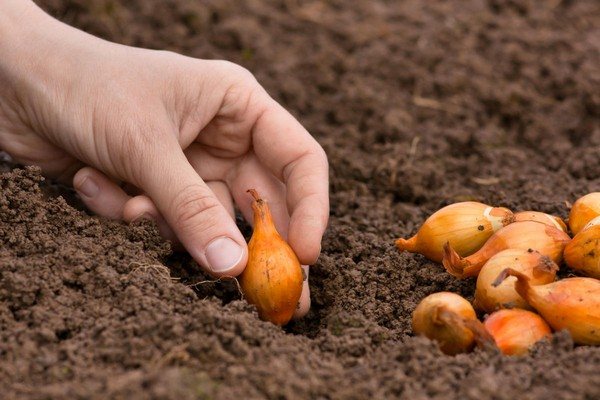

When planting in spring, it is better to prepare the soil in the fall - apply all the necessary fertilizers, disinfect
In the spring, it is additionally recommended to add ash. Too much fertilizer will result in abundant growth of greenery, and this can affect the size of the root crop. Experienced gardeners experiment with several options until they find one that's perfect for the soil. A few days before the introduction of seeds, the ground is covered with transparent polyethylene or a dark film.
Important! Reception has a double effect: it warms the soil and prevents weed growth.
A method of processing a finished bed with the preparation "Baikal EM-1" is described. The product contains strains of beneficial microorganisms. When used, the culture receives protection from fungi and pathogenic bacteria. The process of humus formation is stimulated.


For processing ready-made beds, you can use the drug "Baikal EM-1"
Important! The bed should be about a meter wide and no more than 10 cm high, otherwise the soil will dry out quickly.
Mixed feather and head fit at the same time
When we don't have a lot of space, but you want to grow good onions and eat greens, then this method will come in handy. We make grooves as usual, but we plant the sevok in them in a checkerboard pattern and quite often.
With such a goal that some of these seedlings will grow into a turnip, and some can be pulled as they grow, not greens and consumed fresh.
Otherwise, the steps are the same as in the classic turnip planting (see above).
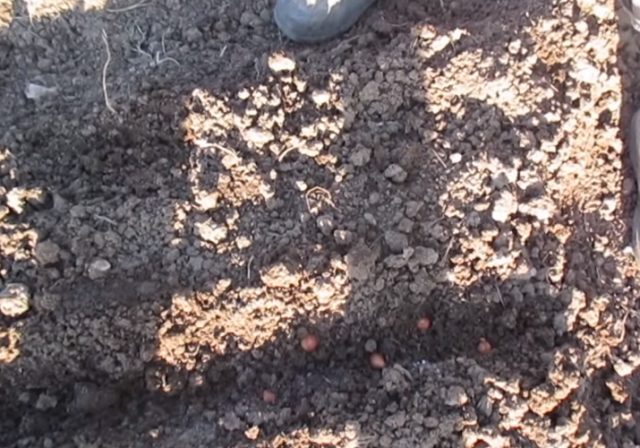

Growing onions
This plant was cultivated very early by humans. Onions came to America after the expedition of Christopher Columbus, who not only discovered this overseas spice, but was also related to the beginning of cultivation on the continent.
Onions are a biennial plant that has a characteristic odor due to the presence of sulfur and essential oils in it.
Vegetable phytoncides destroy streptococci, diphtheria, dysentery and tuberculosis bacilli.
Everyone can grow it: traditionally (in a two-year culture), from purchased seeds, from a sample. In any case, the vegetable needs the same soil conditions and care.
Consider the most popular varieties of onions (picture 1):
- Arzamas - ripening period up to 100 days. Keeps well in winter and does not pose any problems with care. It tastes bitter.
- Moldavian - a very productive variety. Keeps well and is considered universal.
- Bessonovsky - sharp look. It lasts up to 9 months with almost no loss. Unpretentious to care.
- Siberian annual - Mainly grown from seeds. The bulb produces many green feathers. The variety is resistant to arrowing, it is well preserved.
- Strigunovsky - refers to early varieties. Keeps well, resistant to rot. Sharp and bitter taste.


Figure 1. Popular varieties: 1 - Arzamassky, 2 - Moldavsky, 3 - Bessonovsky, 4 - Siberian annual, 5 - Strigunovsky
There are also many varieties for central Russia that give a rich harvest with minimal effort and cost (Figure 2):
- Stuttgarner - grown by seedlings or seedlings. The taste is bittersweet.
- Shetana - suitable for growing in the northern regions. The harvest is well preserved.
- Odintsovets - early varieties. Can be used for forcing greens.
- Danilovsky 301 and the Commissioner - belong to mid-season varieties. Fruits are purple in color, large enough. They are stored for up to six months.
- Albion f1 - white bulbs. The plant tolerates adverse climatic conditions well and is resistant to diseases.


Figure 2. Varieties for central Russia: 1 - Stuttgarner, 2 - Shetana, 3 - Odintsovets, 4 - Danilovsky, 5 - Albion f1
Why are onions useful?
Onions are rich in protein, maltose, sucrose, fructose, polysaccharides, proteins, fats, acids (citric and malic), as well as a whole range of vitamins and chemical elements (Figure 3).
The vegetable is widely used in the cooking and canning industry. It is used raw, sautéed, fried, boiled, salted and pickled.
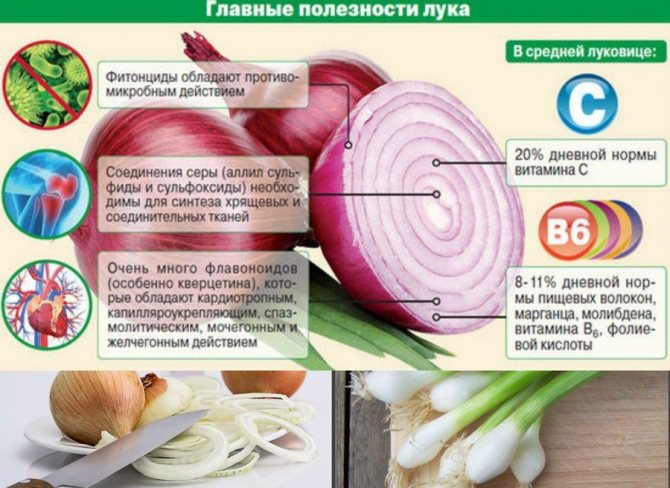

Figure 3. Useful properties of onions
In industry, they are used in the production of canned meat, in the processing of fish, sausages, spicy sauces.
The vegetable activates the metabolism, stimulates the work of the digestive and hematopoietic organs, helps to cleanse the blood, and removes excess fluid from the body. It is also used for cosmetic purposes: it activates hair growth, moisturizes and cleanses the skin.
But still, do not get too carried away with onions, as this can negatively affect the work of the kidneys. You should also be careful in the use of raw vegetables and its juice for people with diseases of the gastrointestinal tract, liver, serious heart disease. Nevertheless, even with such diseases, it can be consumed in moderation, boiled or baked.
Video consultation
An experienced gardener in the following video will share his experience of growing onion sets in the spring:
With the departure of winter frosts and the arrival of spring, you can start planting onions. Taking into account the above recommendations, even an inexperienced gardener will be able to cope with such a task. The main thing is to properly prepare the seed and the garden bed, and after sowing, organize competent care for the crop.
0
Different varieties: what to choose?
Before listing the most suitable varieties for seed reproduction, we outline the main selection criteria.
| Criterion | Description |
| Growing season | The varieties are divided into early, mid-season and late-growing varieties. When growing with seeds, it is better to choose early ones. |
| Number of primordia | In small-germinated varieties, one bulb ripens, sometimes two. The nutrients are concentrated in the fruits. In multi-buds, more bulbs themselves ripen, but growth mainly goes to greens. Therefore, preference is given to a small-germ variety. |
| Bulb size | The indicator is associated with the purpose of the variety, taste characteristics, shelf life. |
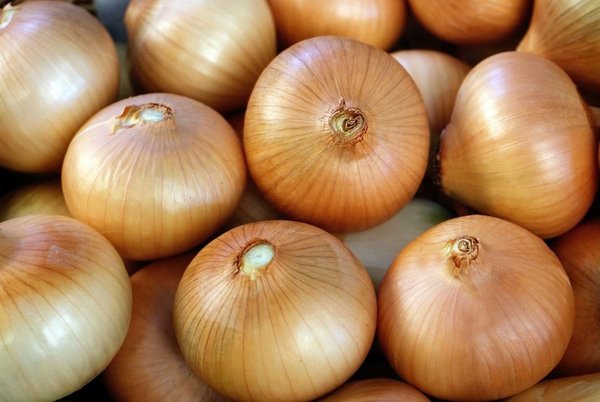

Onion varieties are divided depending on the size of the bulbs, the number of buds, the growing season
The combination of qualities can look very attractive, but inexperienced gardeners should consult with experts. It often happens that, after sorting through several varieties, they find the ideal one for certain conditions.
Important! In order not to make your own mistakes, you can use the experience of others.
Consider the varieties that are best to choose for seed reproduction.
Early ripening varieties are distinguished by good keeping quality. By nesting distinguish:
- with ripening of 2-3 bulbs - Timiryazevsky;
- 3-5 bulbs - Bessonovsky;
- up to 4 pieces - Rostov;
- small, 1-2 bulbs - Odinovets.
Mid-season varieties: Danilovsky 301, Arzamassky, Svirsky, Carmen, Centaur.
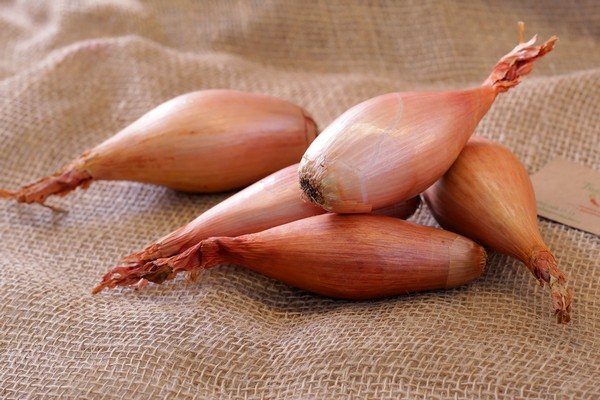

Mid-season varieties include Arzamassky, Svirsky, Carmen
Consider the most popular domestic varieties.
- Centaur. Refers to small germ. The bulbs ripen well by the end of the season, weigh up to 150 g when sown in the ground, when using seedlings - up to 300 g. Root crops are dense, keeping quality is high. Gardeners appreciate the variety for its pungent taste, undemanding cultivation, and disease resistance.
- Agro winter. The variety name indicates the sowing method. Seedlings germinate early. Root crops have an average weight of 90-100 g. The taste is semi-sharp. During the harvest season it is stored until the end of the year.
- Farmer. Suitable for direct planting in the ground and for growing seedlings. Large rounded root crops with juicy white pulp weighing up to 300 g. For their unpretentiousness, resistance to unfavorable climatic conditions and diseases, it is considered universal.
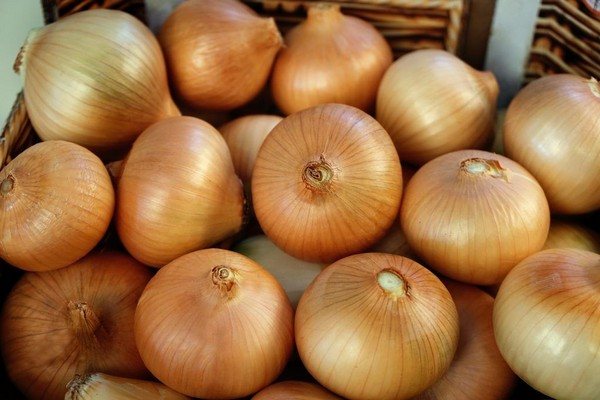

The Farmer variety is considered unpretentious and resistant to different weather conditions. - Golden spool. Early ripening small-breeding variety, suitable for producing onion sets and turnips.
The ways
The method, which is carried out in stages, is to grow onion sets, and the next season onions from it.
You can get a crop at once during the season if you plant seeds or ready-made seedlings in the ground in the spring.
The third option involves winter sowing. The material (onion sets) is planted in the fall, the specific dates depend on the climate. Typically, this is October, possibly the beginning of November. By the way, in this case, the issue of grade is very important. Small onion sets do not give an arrow, but large ones may not respond in time to weather surprises.
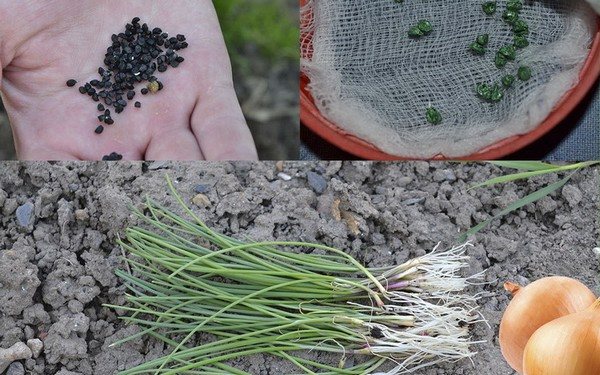

There are three ways to grow onions
Next, let's look at the advantages and disadvantages of growing onions from seeds. We will tell you what methods are used, varieties, how to adapt a small space for growing onions. Let's touch on the issues of seed preparation, soil, crop storage conditions.
Soil preparation for onion seedlings
Sowing of nigella is carried out at the end of February - in the first days of March, in order to plant onion seedlings in the second half of April on a permanent growing site in open ground.
Remember! A delay in planting seedlings in the ground will negatively affect the yield of onion turnip.
The best soil composition is a mixture of turf and humus with the addition of sand in a ratio of 2: 2: 1. You can use sand-humus or sand-compost (compost must be mature) mixture in a ratio of 2: 1. Instead of sand, you can use biovermiculite or coconut flakes, other soil conditioners.
Any mixture should be light, air and moisture permeable, easily shaken off the roots of plants. Natural additives to the soil mixture (sod land, etc.) are subject to disinfection using one of the generally accepted methods. If thermal disinfection was used, then the necessarily prepared mixture for 2.0-2.5 weeks is treated with preparations "Baikal EM-1", "Ekomik yielding" is covered with a film and left in a warm place.
You can treat the soil mixture with biofungicides "Fitosporin", "Planriz", etc.
Diseases
Onions are susceptible to several diseases and pest attacks. These include:
- Powdery mildew... This is a common fungal disease, and the risk of developing it increases in damp weather and with abundant watering.Powdery mildew is dangerous for the testes. Infection is indicated by vague oval spots on the arrows, where a purple bloom then forms. The leaves of the plant turn yellow and dry, and the arrows break.
- Cervical rot... The disease begins to develop when the bulb is in the soil. The fungus penetrates the neck, softens the tissue, makes it watery. The fruit takes on a yellowish-pink hue and an unpleasant odor.
- Green moldy rot. The main "hero" of this disease is a fungus from the famous genus "Penicillium". Affects the bulb. The first signs of the disease are weeping spots and pale yellow lesions, which later turn blue-green. In the cut of the bulb, watery spots from light green to brown. A rotten bulb is soft on the inside and tough on the outside, giving off an unpleasant mold smell. This is a storage sore that "clings" to fruits damaged during harvesting.
- Rust. Caused by a fungus that colonizes feathers. It settles in dark yellow pads that are attached to the leaves. From a distance they resemble rust. The disease is contagious and progresses rapidly, stopping the growth of both leaves and bulbs.
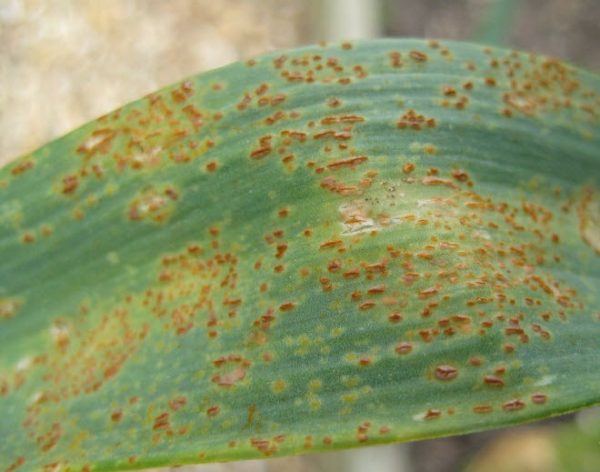

Onion rust
- Onion root mite. The size of the pest is up to 1 mm, so it can be difficult to notice it. It mainly affects diseased and damaged plants. The pest is indicated by brownish dust, which covers the surface of the juicy scales.
- Onion western skulker. The larvae are yellowish, without legs, with a brown head, the body is up to 7 mm long. Beetles are black. The pest feeds on green shoots, leaving white passages.
- Onion moth. The butterfly is activated at high air temperatures. Shoots damaged by moths dry, long spots can be seen on them. Caterpillars up to 1 cm in size eat unopened inflorescences, destroy pedicels.
- Onion fly... Instances damaged by insects are stunted. The feathers turn yellow and wither. The bulbs lose their firmness, rot, and smell unpleasant.
Other pests are also known: stem nematodes, onion hoverfly.
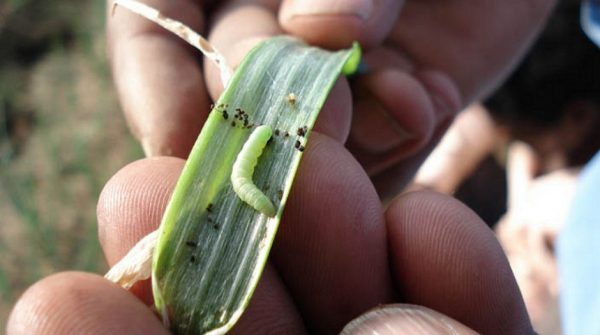

One of the pests of onions is the stem nematode
Onions are treated with the drugs Bazudin, Pochin, Zemlin. Seed plantings are sprayed with insecticides used for cabbage. For prophylaxis, all plant residues are removed from the garden.
Landing
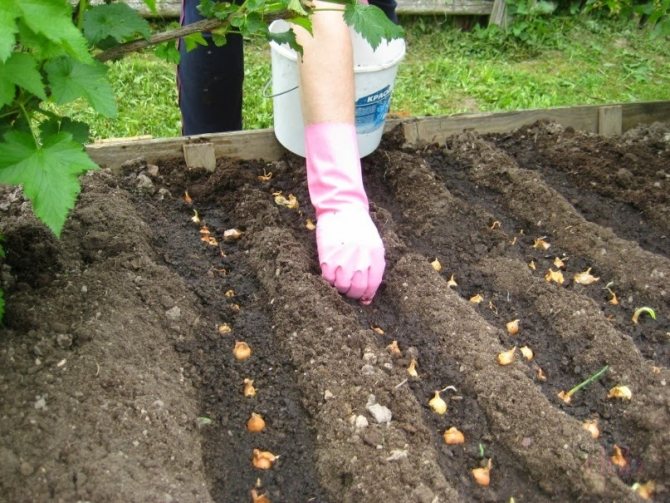

In order for the planting of the sevka on the head to give a good result, the smallest bulbs are planted first, after a few days - the medium ones, and some time later - the largest ones. If planted too early, a large seed will certainly release an arrow.
The seedling on the head is most often planted as follows:
- In the prepared area, the beds are first made (it is desirable that they be high). To exclude the possibility of water accumulation during irrigation, the surface of the beds must be carefully leveled before planting the seedling.
- On the formed beds, transverse grooves are made with a depth of no more than 5 cm, spaced 25-30 cm from each other.
- The distance between the planted bulbs depends on their size. Most often, it fluctuates between 5-8 cm. Between the largest bulbs, you can leave a 10-cm gap to avoid thinning thickened plantings, otherwise you can get too small heads.
- You should not immerse the seedling too deep in the soil, since when the roots are released, the bulb will be drawn into it even deeper. This will significantly slow down the emergence of seedlings, and the grown heads will be weakened and small. To prevent this from happening, the sevok is lightly pressed with your fingers into the prepared grooves so that their burial into the soil does not exceed 1 cm. After that, the planted bulbs are covered with a 2 cm layer of soil or humus.
- It is not worth watering the beds with just planted seedlings: there is quite enough moisture in the spring soil.
Harvesting and storage
You can start harvesting onions from 2-3 weeks of August to early September. The ripeness of the crop will be evidenced by the following signs:
- the greens have stopped growing;
- the feather was killed;
- new feathers have stopped forming;
- leaves turn yellow and dry;
- heads with a characteristic color and scales of a ripe look were formed.
Harvesting cannot be postponed, otherwise the heads will begin to grow again, and the onions will become unsuitable for storage.
You need to start harvesting on a sunny day or cloudy but dry weather. If you cannot break off the stems, the onions and sets can be pulled out by hand. In order not to damage the onion turnips, they should be carefully dug with a pitchfork.
The harvested harvest of onions and sets must be dried. In sunny weather, it can be spread directly on the beds. Under natural conditions, an adult turnip will dry out after 7 days, and the set will dry out after 3-4 days. If the weather is cloudy, the harvested crop will have to be dried under a canopy with good air circulation.
After drying, the stems of the bulbs must be cut off, while leaving necks 3-4 cm long.Then they must be sorted correctly so that large specimens can be eaten, and small ones (up to 3 cm in diameter) can be saved as seeds on a green feather.
Questions and Answers
I want the spring onion to grow early in the garden. When to plant and how?
To get green arrows in early spring, plan to plant in the fall (August-September).
Seeds can be purchased or used independently. They should be pre-soaked in water or any growth stimulant for 10-12 hours. Seeds are buried to a depth of 2 cm in moistened soil, and a layer of mulch is applied on top.
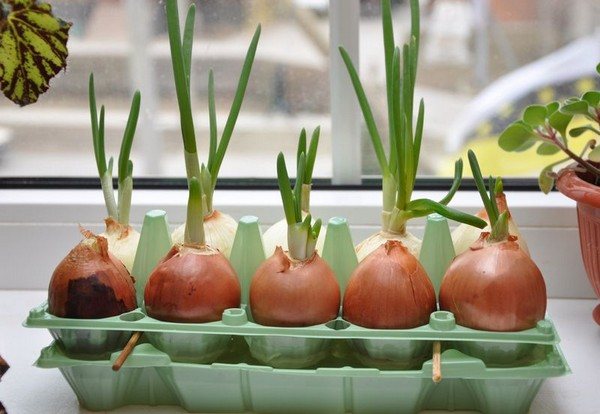

You can grow different varieties of onions on your site, but you should listen to the opinion of local experienced gardeners and choose the most successful ones so as not to waste time on your own experiments.
I planted onion sets from the purchased material, and he gave the arrow. Is there something wrong with the seeds?
Here the reason is rather different. Planting is usually done in early June. Climate change has caused seasonal temperature fluctuations to change. therefore, an arrow could have formed. It must be carefully trimmed, and top dressing can be added for better bulb growth. Make sure that irrigation water does not accumulate in the soil, weed the weeds in time. The bulb grows systematically when the plant has enough nutrients, moisture, oxygen.
Seed creation
To collect the seeds, the so-called boxes on which they are formed are cut off, along with the arrow, calculating so that the shoot is 30 centimeters.
The quality of seeds in one box may vary. The ripening process is uneven: at first the upper ones, later - the lower ones. The appearance of black seeds is a signal to start harvesting.
The seeds are small, and a special technique is used to collect them: they tie the boxes with bouquets and hang them in a shady and well-ventilated place. A cloth or paper is laid out under them, where the seeds are collected as it dries. Thus, nature itself, as it were, selects the most ripe seeds. Then they are checked by pouring water. Quality seeds are dried, ventilated and stored in paper bags, and it is important that the room is dry. Don't forget to mark the collection date.
Important! The shelf life of the seed is 3 years.
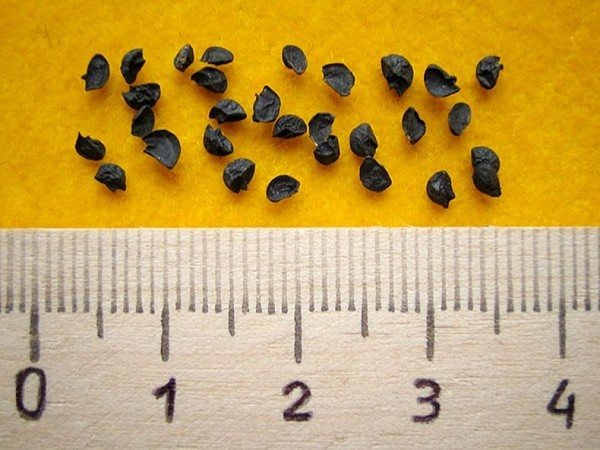

Seeds can be obtained independently from the boxes formed on the arrow of the onion
Biological features of onions
Onions are two- or three-year-old plant species. When sowing seeds of a two-year culture in the first year, summer residents receive bulbs, which, when planted the next year, form arrows with seeds. A three-year culture in the first year of growth yields onion sets. The resulting set is planted in the ground for the second year and bulbs are grown from it. Only in the third year does the plant form arrows and give seeds. Culture refers to plants with long daylight hours.Rapid growth and maturation are observed in areas with long days. In regions with a short day, onions grow poorly and do not produce seeds.
Preferred onion precursors
Before sowing, it is necessary to determine the required amount of seedlings. The plant is demanding on the observance of crop rotation on the site, therefore, it is determined in advance with the places and area of planting.
Of the popular vegetables, good predecessors for onions will be tomatoes, potatoes, eggplant, zucchini, squash, lettuce. A significant amount of organic matter and mineral fertilizers are usually applied under these crops; before planting onions, they have time to dissolve well in the soil. A small number of pests that winter in the ground in common with these crops also play a role.
Onion pests often hibernate in plant residues from the previous harvest. The tops must be collected and destroyed before the autumn digging of the beds. When using this waste for composting, there is a high risk that the pests will survive the frost safely.
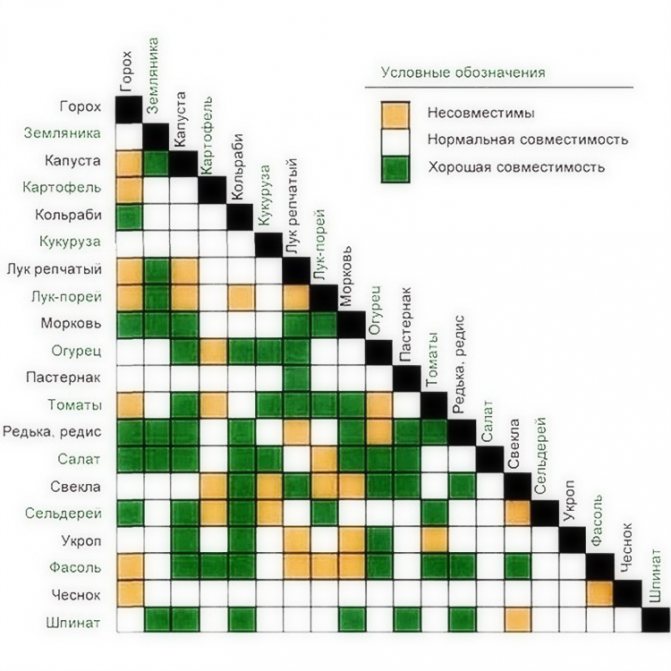

Soil for planting
Onions are grown on different soils. On sandy loam and sandy lands, which are distinguished by lightness, the vegetable is sown earlier. Then the bulb turns out to be clean, with a bright color of the scales. The disadvantage of such soils is the need for frequent watering, rapid leaching of minerals introduced with top dressing.
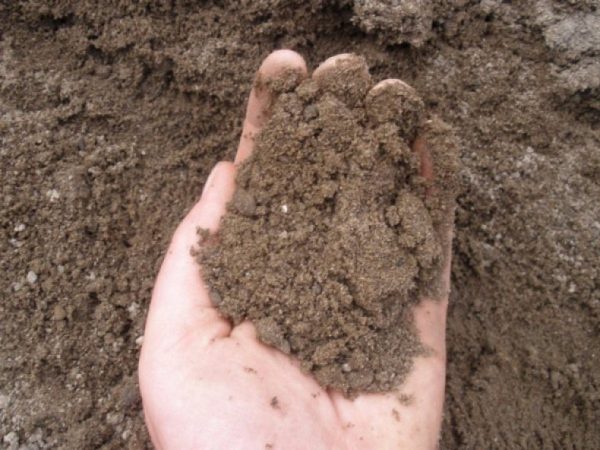

On sandy loam soils, a cleaner crop is obtained
Heavy clay soils prevent early sowing. A crust forms on the surface, so there is no way to get the required standing density. At the same time, it is easier to maintain the required level of moisture and mineral components. The harvest obtained under such conditions is stored longer.
The vegetable is sensitive to acidity. It is better to choose soils neutral or weak acidity. Any deviation is harmful to the vegetable. The degree of acidity is determined, for example, by the plants living on them. So, acidic soils prefer sorrel, horsetail, buttercup.
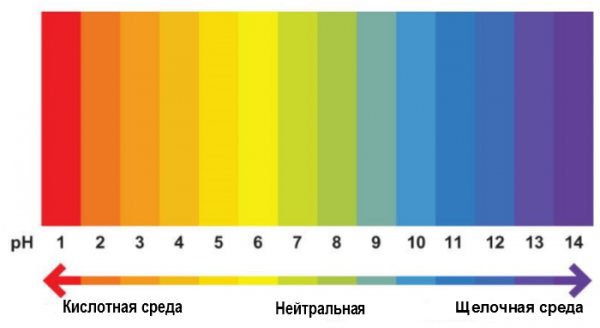

The acidity of the soil is checked with litmus paper.
Tests are carried out with chalk. A little soil is poured into the bottle, water is poured in and chalk is added. A fingertip is put on top of the neck. If, after shaking, the fingertip inflates, then this indicates a reaction with the release of carbon dioxide. Therefore, the soil is acidic. Mixing chalk with neutral soil will not straighten the accessory.
Follow-up care
To get a large and tasty harvest, it is important not only to plant correctly in the spring, but also to fully care for the plant in the garden. Basic rules for caring for onion sets after planting in open ground:
- It is necessary to make regular watering: Watering the seedlings after planting on the head during the active growing season should be once or twice a week. The soil should always be moderately moist.
- But already in July, at the time of active ripening of the crop, it is necessary to reduce watering, the optimal frequency is once every 14 days.
- Watering must be completely stopped three weeks before harvest.
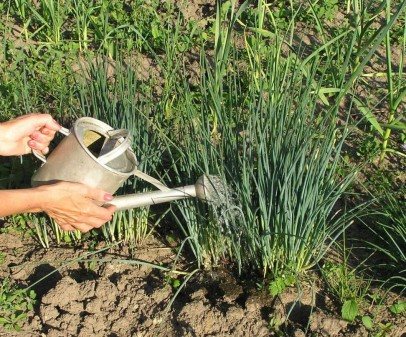

Advice! When greenery appears above the surface of the earth, it is recommended to open the shoulders (neck) of the sevka, pushing back a little of the earth. This trick will help you get larger bulbs and ripen crops on time.
- A very important element of caring for onion sets is loosening... It is necessary to loosen the bed frequently to improve air flow to the roots. The lesson is not difficult, but extremely useful. If this is not done, a crust may form on the surface, preventing the supply of oxygen. At the same time, it is very important to perform shallow, but not very deep loosening in order to prevent damage to the underground part of the plant.
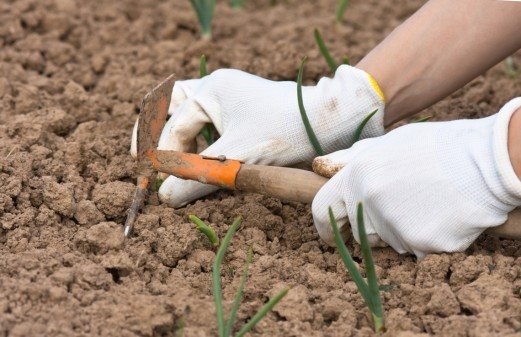

- Weeds must be removed regularly. Such care is very necessary when growing plants.
- Regular feeding - a guarantee of a good harvest in terms of quality and quantity. The first time you need to feed it twenty days after planting on a turnip.It is optimal to use chicken manure (1 part of the substance to 15 parts of water) or rotted mullein (the proportion is one to ten). The feeding rate is ten liters of fertilizer per 1 m² of area.
- The second feeding should be done three weeks after the first time. It is recommended to use potassium sulfate and ammonium nitrate as fertilizers. Apply 15 grams of each substance per square meter before watering.
- Subsequently, it should be fed as needed. And the need can be determined by the plants themselves: slow growth, pale leaves. For example, a green bunch is small, feathers are short - a lack of nitrogen, drying of the bulbs indicates a lack of phosphorus, feathers are grayish and carved edges are a deficiency of potassium.
A bountiful harvest of onions from your garden is a real joy for any summer resident. The spring planting algorithm is quite simple. The main thing is to do everything efficiently and carefully, and then follow the recommended cultivation techniques. The culmination of the whole process described above is harvesting, the time of which may differ in different regions, on average, falls on the end of July-mid-August. It is recommended to focus on the plants themselves - their leaves should lie down, turn yellow and dry. You need to harvest the crop along with the tops. Before sending for storage, it is imperative to dry the vegetable.
Preparing onions for planting in spring
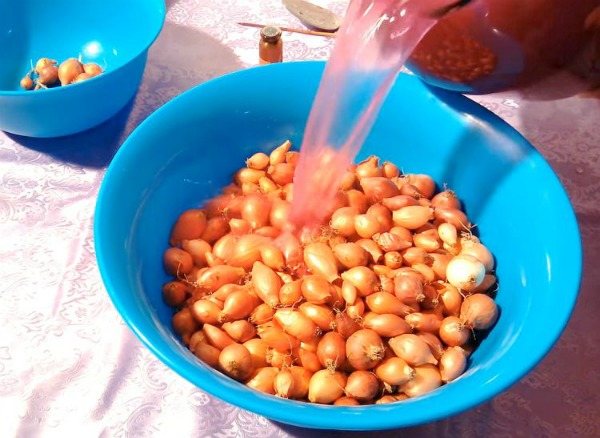

During storage, pathogens can persist on the onion set, which, after planting, are activated and cause damage to the plant. To disinfect the planting material, before planting, the onions are soaked in solutions of salt, Fitosporin, potassium permanganate, heated and dried.
- Soaking in salt or baking soda
Saline solution has a beneficial effect on the germination of onions, kills pest larvae. For solution preparation, 1 tbsp. a spoonful of table or sea salt is dissolved in 1 liter of warm water. The onions are kept in salt water for 3 hours, after which they are dried and planted.
Baking soda has a similar effect on sevok. Its concentration is 1.5 tsp per 1 liter of water, onion holding time is 1.5 hours.
- Fitosporin M solution
The drug protects the vegetable from powdery mildew, phytophthora, rust, bacterial rot. To prepare 1 liter of solution, dissolve 20 g of powder in boiled warm water. The sevok is kept in liquid for no more than 10 minutes, then dried and planted.
- Potassium permanganate
The action of the powder is similar to that of Fitosporin. For etching the planting material, a saturated pink solution is prepared, where the onions are kept for a couple of hours.
For the convenience of processing a large amount of sevka, it is poured into a mesh or colander, and so it is immersed in a solution.
Warming up the onion is carried out to get rid of the planting material from the pathogen of powdery mildew. Sevok is scattered in one layer on pallets and kept at a temperature of 45-50 degrees for several hours. It is important not to exceed the indicated temperature so that the onion does not "cook".
How to soak onions before planting to protect against diseases and get a rich harvest - video
Basic requirements for growing onions
Onions are cold-resistant plants and can grow at temperatures of 12-15 ° C. The seeds of the crop can germinate even at temperatures of 5-6 ° C. In general, spicy varieties of onions tolerate frost well. Sweet species, with a slight decrease in temperature, can quickly die in the open field. In the early stages of growth, watering is extremely important for the plant. With proper watering, the onion begins to develop rapidly. The soil must be kept dry before maturing. This contributes to the better ripening of the vegetable.
When growing onions, the summer resident should take into account the following nuances:
- The plant is harmful to the increased acidity of the soil.
- It is recommended to use wood ash before planting, since the culture does not tolerate liming of the soil.
- It is not recommended to plant the plant in groundwater areas.
- The soil in the bed with onions should be loose.
Onions do not tolerate proximity to weeds, so the beds should be weeded regularly.
Onion pests and diseases
To organize proper care, it is important to know what the onion is sick with and what insects can harm it. Of the diseases for onions, cervical, gray and white rot, as well as jaundice, fusarium, downy mildew (peronosporosis), smut, rust, mosaic and tracheomycosis are dangerous.
White rot develops on acidic soils, so try to lime the acidic soil on the site. In addition, excess nitrogen in the soil contributes to the development of the disease. Sick specimens must be removed from the garden, and before laying the bulbs for storage, they are powdered with chalk for prophylaxis.
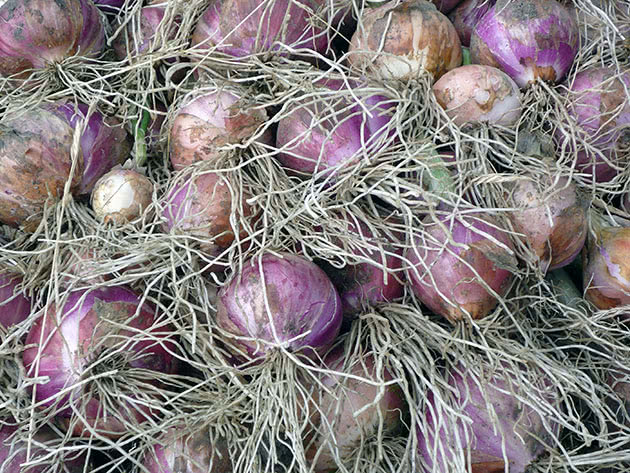

Fungus causes gray rot, and wet and rainy weather contributes to the spread of the disease. Sick bulbs must be removed, and as a preventive measure, strict adherence to agrotechnical conditions and spring treatment of onions with a solution of copper sulfate give good results.
Onion jaundice is a viral disease that deforms flowers and forms chlorotic spots on the leaves. It is impossible to cure a viral disease, therefore, it is necessary to immediately remove from the site not only specimens with its symptoms, but also keep the beds with onions and aisles clean, removing weeds as soon as they appear. And, of course, observe the crop rotation.
Downy mildew (peronosporosis) appears on the leaves and stems with light oblong spots with a gray bloom, which gradually turn black. Bulbs affected by peronosporosis begin to germinate early during storage, diseased plants do not form seeds. To eliminate the causative agents of downy mildew, the harvested bulbs are warmed up for 10 hours at a temperature of 40 ºC before being stored. To avoid disease, make sure that the onion plantings are not too thickened.
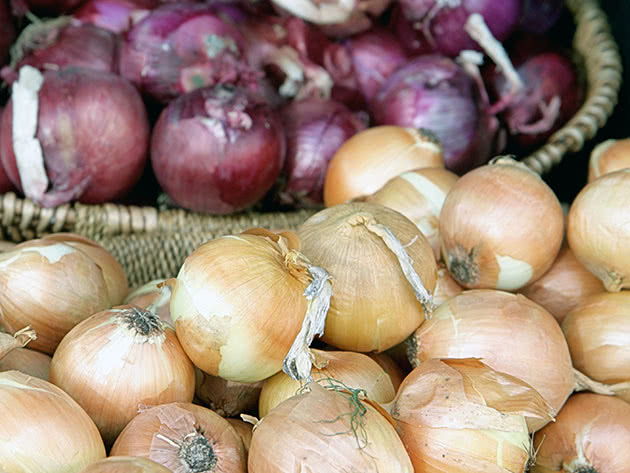

Fusarium disease is manifested by yellowing of the tips of the feathers, since rot and tissue death develop in the area of the bottom of the bulb. This is a fungal disease that is especially active during hot seasons. The cause of fusarium can be damage to the plant by an onion fly. As a preventive measure, warming up the seed before planting is used.
Symptoms of smut look like convex translucent dark gray stripes on which tissue cracks over time, releasing fungal spores outward, and the tips of the leaves dry. To protect the stored bulbs from disease, preheat the bulbs at 45 ºC for 18 hours before laying. As a preventive measure, remove weeds in a timely manner and do not sow different varieties of onions in the same area.
Rust manifests itself as brown-red swellings on the leaves of onions with fungal spores contained in them. As a preventive measure, heat the harvested bulbs at 40 ºC for 10 hours before storing them. Monitor the density of the beds and promptly remove specimens with symptoms of the disease from them.
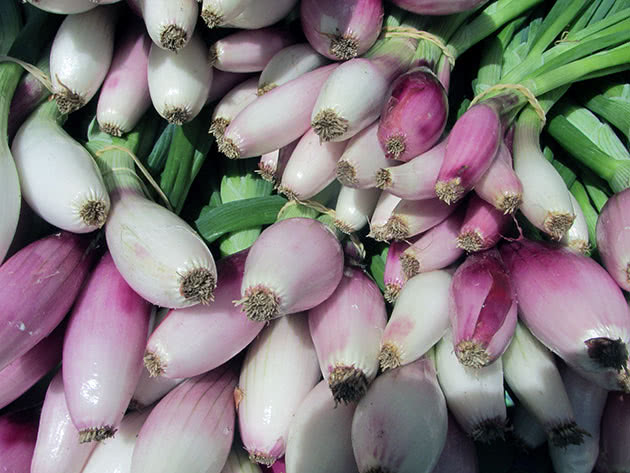

Tracheomycosis is a consequence of fusarium: rot begins from the lower tissues of the bulb, gradually rising higher and spreading to the entire bulb, causing the roots to die off and yellowing of the onion feathers. Remove plants with symptoms of tracheomycosis, follow the rules of agricultural technology and crop rotation.
Onion neck rot is manifested by a gray, dense bloom of mold on the outer scales, which eventually turns into black spots. The disease manifests itself after harvesting the bulbs, and subsequent symptoms appear after two months. Late varieties are especially susceptible to infection.The disease develops when onions are grown in unfavorable conditions, therefore, the main rule should be compliance with agrotechnical conditions, as well as warming up the seedlings before planting and the harvested bulbs before storage at a temperature of 45 ºC.
- Onions on a feather: forcing and growing onions for herbs in a greenhouse and at home
The mosaic transforms the onion leaves into flat, corrugated patches with yellow stripes, the onion inflorescences become smaller, the seeds become smaller, and the plant stagnates. This is a viral disease, and you can only fight it prophylactically.
All fungal diseases are easily treated with fungicides, but before processing onions, think about the fact that bulbs tend to accumulate not only nutrients, but also poisons, so we do not recommend you use chemical preparations in the fight against diseases.
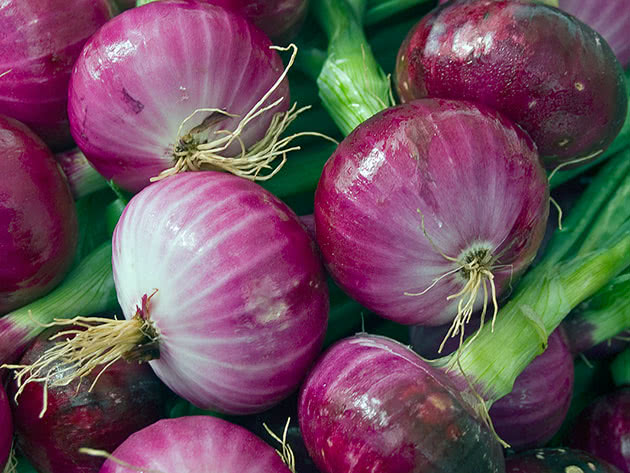

Of the insect pests, the most dangerous for the plant are the onion proboscis, moth and fly, sprout fly, bear, cabbage, garden and winter scoops and tobacco thrips.
- Treatment of plants with one percent solution of Bitoxibacillin or half percent solution of Gomelin is effective against caterpillars of scoops.
- Treatment with Actellik or Karbofos (0.15%) helps against tobacco thrips.
- The lurking proboscis is destroyed with systemic insecticides.
- The larvae of the sprout fly die during deep autumn digging of the site.
- The onion fly is afraid of the smell of carrots - alternate rows of onions with rows of carrots, and the onion fly will fly around your area.
- In the fight against onion moth, it is necessary to remove weeds from the site in a timely manner during the season, and at the end of the season - all plant residues, observe the rules of agricultural technology and crop rotation.
- Medvedka ordinary is lured with traps: they dig out holes half a meter deep in several places, place horse manure in them and cover them with boards made of boards. When the bears climb into them to warm up, they are destroyed.
Frequently asked questions
How to choose the optimal time for planting onions in winter?
There are all kinds of advice on the Internet - both at the end of September and at the beginning of November. The most interesting thing is that they are all correct. The point is that the authors orient the reader to their region. Hence, another conclusion follows - the determination of the timing of planting onions on the eve of winter is done individually for each area, taking into account the peculiarities of the climate.
What is desirable to mulch the beds?
For podzimny planting of onions, the optimal period is when the average daily temperature is about zero. If the thermometer shows +5 during the day, and drops to -3 at night, then it's time to plant onions, since the soil is still relatively warm, about +3.5 (± 0.5) ºС, but winter is already close. However, one cannot ignore forecasts of weather forecasters.
For example, if a thaw is expected after the first, short-term frosts, then you should wait with planting onions in the winter. If you hurry, the culture will quickly take root and sprout. In this case, it is unlikely to safely endure the period of cold weather, and there will be no good harvest. This means that all the work is down the drain. But you shouldn't be late with the winter planting of onions either. Otherwise, before the frost, he will not have time to adapt to a new place, to put down roots. Actually, the result will be the same - low crop yield.
What kind of onion is advisable to plant in the winter?
And there can be no single recommendation on this point. It is different for each region. But if we summarize the information available on this issue, then the majority of specialists and experienced gardeners distinguish such varieties of onions as Bessonovsky, Arzamassky, Skvirsky, Chalcedony, Centurion, Strigunovsky, Danilovsky-301 , Shakespeare, Spassky, Stuttgarten Riesen, Ellan, Pogarsky, Radar, Odintsovets, Myagkovsky-300. They give a good harvest when planted in winter in almost all regions of the Russian Federation.


Recommendations:
- The "Ellan" variety is considered the best for winter seeding.
- Those who want to get an early harvest should pay attention to the Strigunovsky and Bessonovsky onions.
- In order not to be mistaken in choosing a variety, it is advisable to ask what kind of onion the owners of adjacent territories plant in the winter. As a rule, summer residents are sociable people, and they will be happy to share their secrets.
- You should not dwell on any one type of onion. Even if the neighbors receive a high harvest at the beginning of next summer, this does not guarantee that the same will happen in their own farmstead. The reasons are very different - features in the configuration of underground water layers, the degree of blowing through the site, differences in the soil, and so on. Therefore, it is advisable to plant 3-4 varieties of onions in winter. After a couple of years, you can finally decide which of them is better to cultivate on your territory. This is the most correct decision.
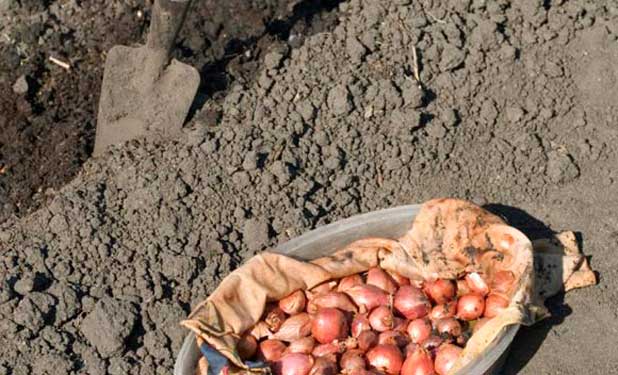

Growing seedlings from seeds
Many gardeners prefer to grow onions from seeds.
This method has undeniable advantages:
- Onion seeds can be easily purchased at the store, where the assortment of varieties is quite wide.
- Unlike the purchased onion set, the gardener will be sure of the planting material, its quality and benefits.
- Self-grown onion sets will be adapted to the specific soil type and climatic conditions.
However, growing good onion sets is not as easy as it seems at first glance. Many gardeners face certain challenges.
Often, with improper care, the plant:
- rots;
- outgrows;
- drops out;
- forms small bulbs.
Landing dates
The most important stage in onion cultivation is the selection of the sowing time. Planting seeds should be done as soon as the soil allows. A slight delay in planting dates can affect field germination of seeds, yield and quality of seedlings. Being late with sowing does not allow the vegetable to fully ripen and negatively affects its long-term storage. The third decade of April is considered a favorable period for planting. At this time, as a rule, the weather does not present surprises in the form of severe frosts.
Seed preparation
The seeds offered by the shops are treated with a fungicide and are completely ready for planting.
With seeds grown independently, the following procedures must be done before planting:
- Soak the seeds in warm water for a day.
- Etch nigella in a weak solution of potassium permanganate.
- Soak the planting material in the Epin solution (2 drops of solution per 100 ml of water).
- Heat the seedlings in hot water at 50 ° C for half an hour.
The emergence of onion seedlings can be significantly accelerated by germinating seeds. To do this, the seedlings are kept in wet gauze for a couple of days, preventing it from drying out.
It is important to remember that nigella has a short shelf life, so it is recommended to use only last year's seeds for sowing.
When planting seed with a two-year or more shelf life, there is a high risk of not waiting for seedlings.
Sowing seeds
Before sowing dry seeds, the prepared bed must be watered with hot water. When sowing germinated seeds or seedlings, preliminary watering of the garden is not necessary.
There are two ways to plant seed:
- in rows;
- ribbons.
The gardener chooses the method of growing onions based on his personal preferences.
Sowing in rows
When planting onions in rows, you must do the following:
- Mark grooves with the sharp end of the hoe at a distance of 25 cm.
- Place the seeds in the rows at a distance of 1.5 cm.
- Sprinkle the seedlings with loose earth or humus 2-3 cm.
- Compact the soil with a spatula and water the garden bed with a watering can.
- Mulch the bed with peat, saws and humus and, if possible, cover with foil.
The size of future bulbs directly depends on the planting depth. A thinner layer of seeds will not produce friendly shoots, and a deep planting will not allow bulbs to form.
Sowing with a ribbon
With this method of landing, the following manipulations are done:
- On the bed, wide stripes are formed with a width of 8-10 cm and at a distance of 20 cm from each other.
- The material is randomly sown on a leveled surface (at the rate of 10 g per 1 square meter).
- The soil is tamped and the beds are watered.
- They do soil mulching with humus, sawdust and peat.
The main advantage of the tape method is that when the bulb is formed, the seeds next to it are moved to the free space in the garden.
Crop care
The first shoots of onions after planting appear in a week. The initial stage in the development of a bow is feather extension. Watering plants in dry weather should be done 2 times a day. When the bulbs form closer to July, watering should be stopped. In case of heavy rains, onion beds must be hidden. To do this, you can put arcs and close the crops with plastic wrap. Some craftsmen put a roof over the garden bed and cover the crops with foil. At all stages of plant development, it is necessary to weed and mulch the soil.
Harvest
The small onion ripens by the end of July and beginning of August. At this time, the feathers of the plant lie on the ground and begin to turn yellow. During harvesting, it is customary to pull the onion together with the tops. After that, the harvested crop is evenly spread under a canopy and left to dry for 10-15 days. If during the harvest season the weather outside is sunny, it is allowed to leave the seedlings in the garden until the feathers are completely dry. When the bulb has absorbed all the nutrients, the feather is cut off, leaving a 2-3 cm tail.
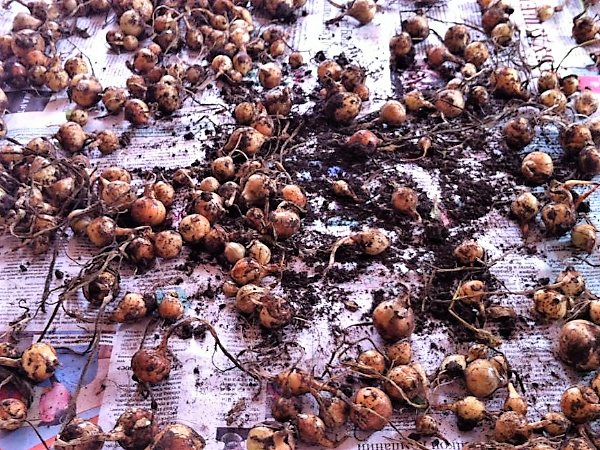

Drying the seed
Sevka preparation for storage
Storage methods may vary depending on the size of the harvested onion.
The first stage of preparation is to sort the bulbs by size:
- small - up to 1 cm;
- medium -1.5-2.0 cm;
- large - more than 3 cm.
The best place to store your sevka is in mesh bags. The vegetable storage room must be well ventilated. The optimal storage temperature for small seedlings is 0 ° C. At higher temperatures, small-diameter onions tend to dry out and may die. Medium and large sets can be stored at room temperature. At high storage temperatures, the bulbs can go into the arrow after planting.
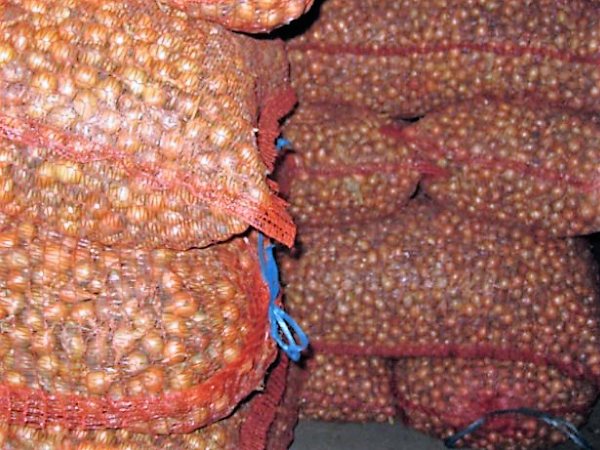

Sevka storage
Seed preparation
Regardless of whether they sow seeds for seedlings or directly into the ground, you need to carry out several agrotechnical measures:
Quality checking. The need for this operation is caused by poor seed germination, if it is insufficient, in order to obtain even seedlings when sowing, it is necessary to increase the planting density.
For testing, the seeds are wrapped in a damp cloth and left for 10 to 20 days, periodically moisturizing. There are no special temperature conditions for this - onion seeds germinate at temperatures from +2 degrees Celsius. If less than 75% of the seeds have sprung up, the planting rate is increased;
Spores of fungal diseases are destroyed by soaking the seeds in a solution of pink potassium permanganate. Pickling time - 10 - 12 hours just before sowing;
Before planting, the seeds are dried - when wet, it is difficult to evenly distribute them over the surface.
Everything you need to know about sevka
Onion sets (seedling, arpash) - small onions forgiven from the seeds of Chernushka. Growing from sevka is very popular. This is due to a faster ripening period and good storage performance in winter.
In order for your work to be justified by a bountiful harvest, the planting of onion sets must be planned in advance. First you need to carefully sort through and select the necessary material: remove the rotten and dried, sort. This will ensure that the plants rise at the same time and facilitate the maintenance process. Planted sequentially: first large bulbs, then medium and at the end very small.To prevent large fruits from going into the arrows in the future, it is necessary to warm up the harvested material 3-4 days before planting (preferably to a pleasant room temperature).
How to choose the perfect location
Onions are a big fan of the sun, so it is recommended to plant them in open and always well-ventilated ground. Such a place of deployment will help to avoid the attack of diseases on the plant. Prepare the sleds in the summer and the soil for planting onions in the fall. To do this, it is necessary to decide in advance on the landing site and dig it up, no more than a shovel bayonet deep and level the territory. You do not need to plant onions in one place, it is best to sow where tomatoes, legumes, zucchini, pumpkin, cabbage or siderata previously grew.
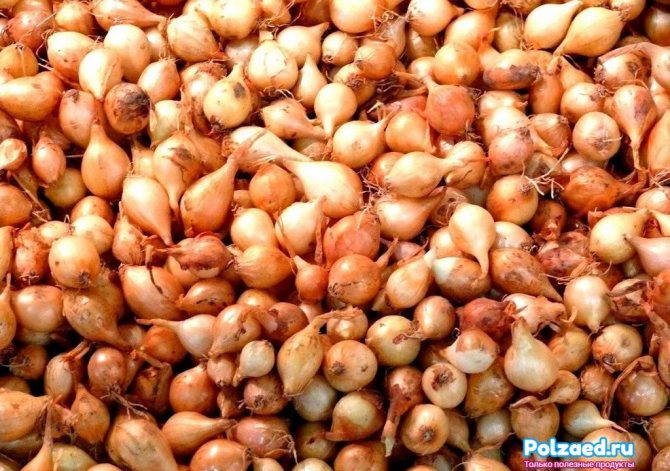

Perfect time to board
Planting onion sets in the spring (early) ensures the formation of a strong root system. In the southern regions, you can do this already at the end of March. In the northern regions, it is better to postpone the procedure to the end of April - beginning of May. A later planting of seedlings is fraught with a protracted period of sunrise, may affect a decrease in the quantity of the crop and its quality. As a rule, the first sunrises can be seen in 10-15 days.
Principles of planting sevka
It is necessary to start the process with fluffing (with a shallow harrow, rake) and harvesting weeds from the site. It is best to plant not "by eye", but according to preliminary markings. The rows should be 4-6 cm deep, the distance between them should preferably be 20-25 cm, between the bulbs in one groove at least 7 cm (7-8 cm is ideal).
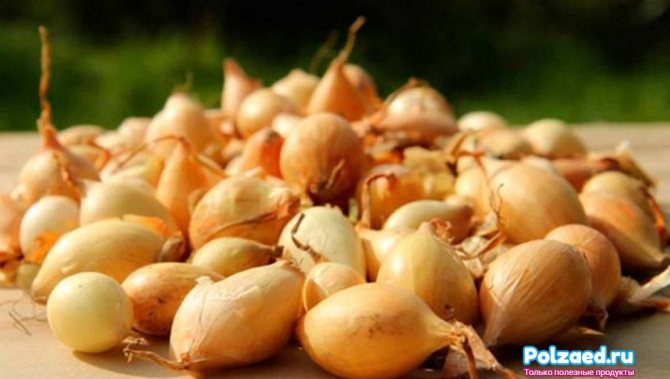

You need to spread the sevok in the moistened soil with the bottom down, pressing a little, as if fixing it. It is necessary to cover the top with earth (by 3 cm) and compact it a little. Planting onions at shallower depths in spring can create an unfavorable atmosphere for plant development, as the roots will not have enough nutrition from the soil. It is also not recommended to plant the onion deeper, in which case the sunrise period can be significantly delayed.
Types and varieties of onions
The species and varietal composition of onions is very diverse. They differ in terms of growing time, structure of their green and underground parts. Smell, taste can vary significantly. Any gardener can choose a variety according to their taste preferences. Unfortunately, not all types of onions are widely used. The existence of some, they know only by hearsay.
Bulb onions
This type of plant is familiar to everyone. The underground part is used for food - the onion. Green feathers are tough, and mass cutting during the growing season can negatively affect the yield.
It is grown from seeds - nigella, or by planting seedlings.
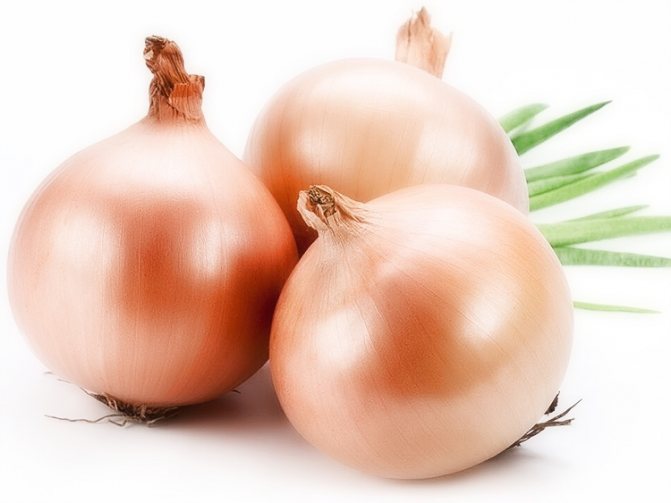

Leek
Its second name is pearl. Grown to obtain a stem - legs. It has a fleshy structure, delicate taste. During storage, the vitamin C content does not decrease. The leaves of the plant are tapered. The place of the bulb is developing the trumpet. Its length can reach from 15 to 40 cm with a thickness of up to 8 cm.
Seeds of this species lose their germination after two years. This should be considered when buying.
Famous varieties: Jolant, Karantansky, Bandit, Detri, Ginka, Vesta, Goliath, Tango.
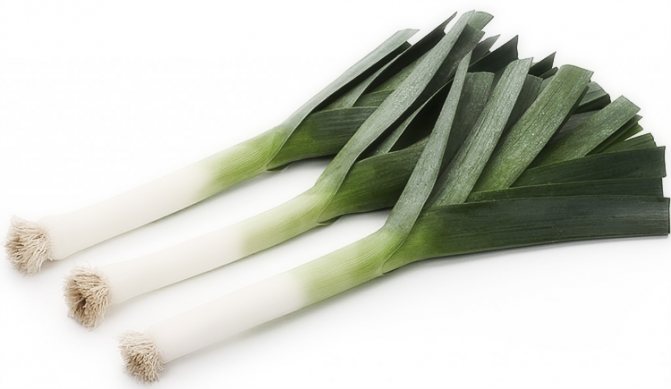

Shallot
It is found under the names of multi-star or family bow. You can often hear the name "kuschevka". The peculiarity of the structure lies in the formation of a nest from one planted bulb, which can contain up to 10 bulbs. Their size, however, is small - up to 3.5 cm in diameter.
This type of onion actively accumulates nitrates, so it is advisable to fertilize with organic fertilizers.
Sorts: Kuban yellow, Zvezdochka, Russian violet, Siberian yellow, Bonilla.
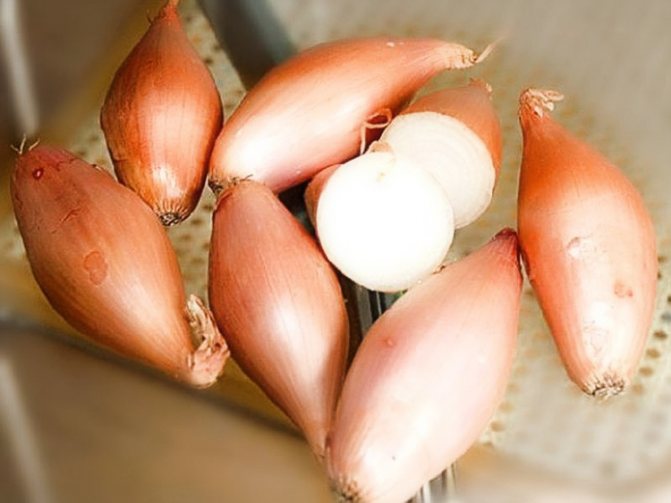

Chives
There are its names: chisel, skoroda, rezun. Rich in vitamins.
Designed for growing on greens. The high sugar content gives a sweet taste. Very hardy, suitable for growing in the northern regions. Grown for 3-4 years in one place, for 4 years of cultivation gives up to 150 branches in one bush.Cutting is carried out 2 - 3 times per season. Propagated by sowing seeds or dividing the bush for 2 - 3 years of cultivation.
Popular varieties: Moscow early ripening, Siberian, Bohemia.
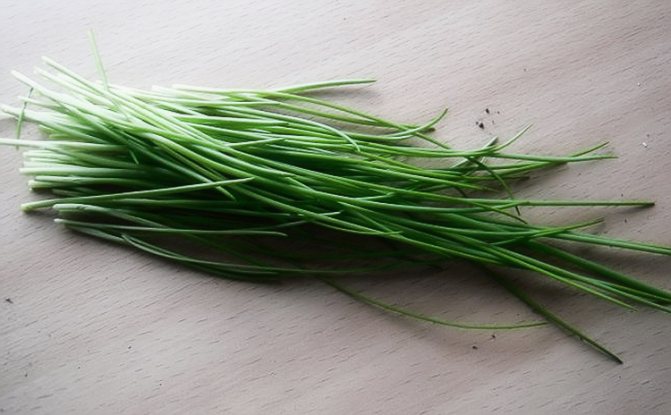

Sweet onion
This species, often called Japanese, has flat, rounded leaves at the tips. It grows in one place for 4 - 5 years. By this time, it forms up to 25 branches simultaneously. Contains a lot of carotene and ascorbic acid. The false bulb has a diameter of up to 1.3 cm. It blooms with beautiful white inflorescences about 5 cm in diameter. Propagated by seeds or vegetatively, dividing a 2 - 3 year old bush.
Fragrant onions are zoned for different climatic zones, Jusai, Fragrant are popular.
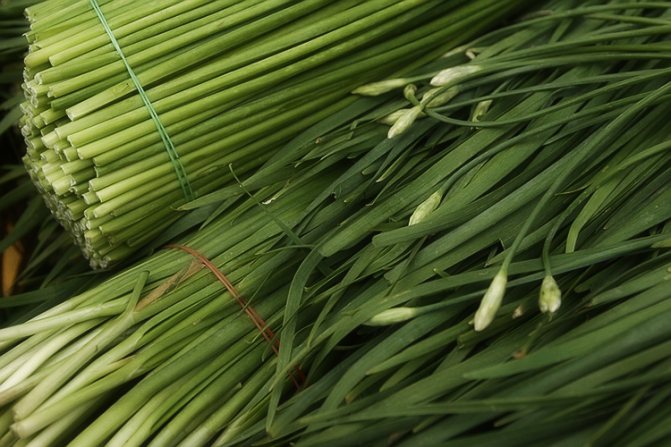

Tiered bow
Popular names - Egyptian, as long as Cambolo. During the growing season, forms 2 - 3 tiers of air bulbs. The plants are cold-resistant, the greenery grows back in March. Propagated by those very airy bulbs. Planting material is harvested immediately after ripening - on the plant the bulbs quickly deteriorate.
Famous varieties: Odessa, Gribovsky 38, Likova, Memory.
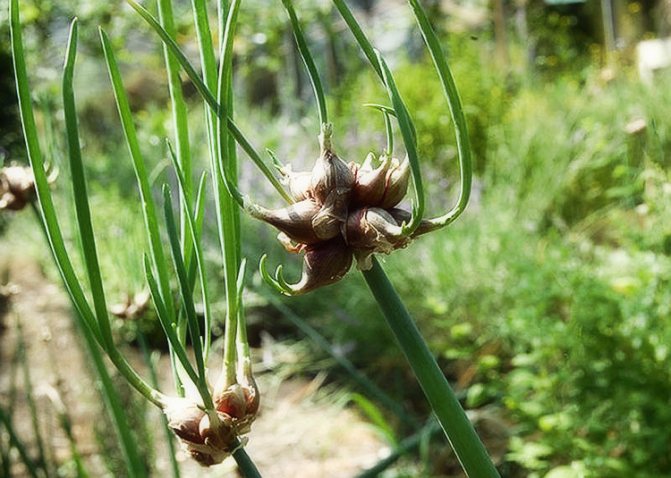

Onion
Often called sand or Tartar onions. Biennial plant. Instead of a bulb, it forms a thickening of the stem. Grown to obtain a feather. In the second year, the plant blooms. In one place it can grow up to 4 years.
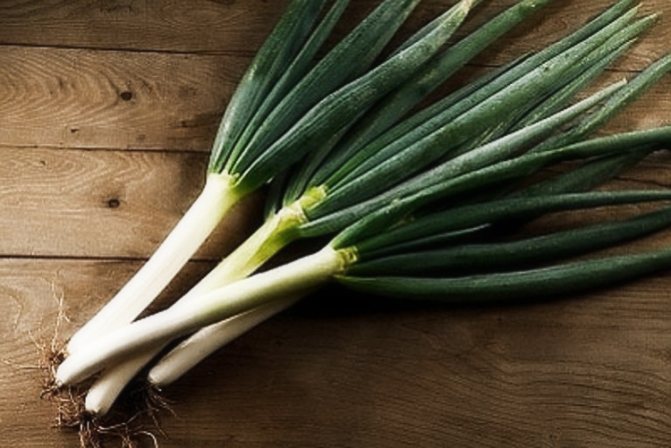

Aging bow
A wild type of onion is buchu, mangyr, wild onion. Distributed in Mongolia, Korea, the Caucasus. The leaves are flat. As it matures, the plant acquires a pungent taste. The onions are cut into rings and dried. Used in first courses.
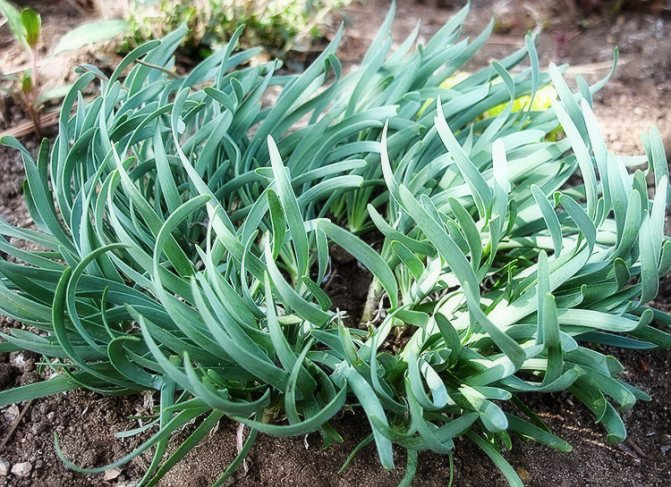

Slime onion
This type of onion has flat, juicy and tender leaves. The taste is not spicy with a faint aftertaste of garlic. Propagated by seeds or seedlings.
Alrat. Albert, Star, Cascade.
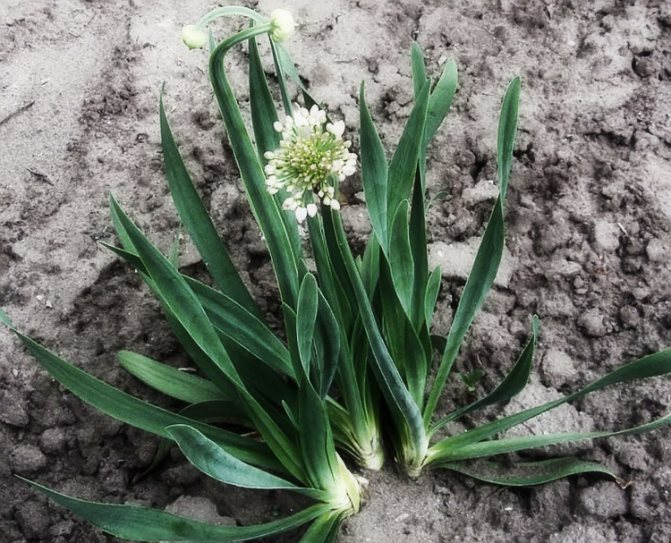

Ramson
The plant is classified as garlic due to its pronounced smell. In fact, this is also an onion, the name "bearish" is found. Unlike garlic, there is no smell after eating. Leaves are used fresh, pickled or salted in winter.
The names of some varieties come from the name bear: Bear cub, Bear delicacy, Bear's ear.
Ramson grows poorly in sunny places. The best place for her is partial shade.
Methods for warming up the set
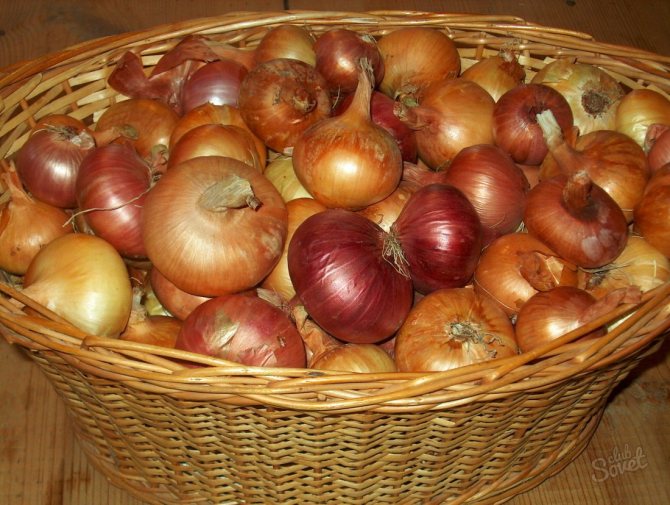

Heads intended for planting must necessarily undergo special processing, which consists in warming them up. This procedure helps prevent arrows from appearing. If you ignore the procedure for warming up the planting material, the probability of the appearance of arrows will be one hundred percent.
There are several options for heating the set:
- 14-20 days before planting, the calibrated and sorted seedling is brought into the house and, spread out in one layer, is left in a warm and dry place with a constant air temperature (values from 20 to 25 degrees are considered optimal). Ceiling shelves or tops of cabinets are ideal for this purpose.
- The duration of warming up can be significantly reduced by increasing the air temperature (up to about 35 degrees). This ambient temperature can be achieved by placing the seedling next to a heater, boiler or radiator. The duration of the procedure is no more than three days. This option has one significant drawback: in case of overheating, the bulbs, overheating, may lose their ability to sprout.
- If the gardener does not have a lot of time (for example, if the seed was bought at the last moment, right before planting), you can use the express method, which involves more intensive heating of the planting material. During the procedure, the seedling is placed in a container with water heated to 50 degrees for 15 minutes, after which it is cooled for the same time by moving it into a bowl with cold water. This technique contributes to additional hardening of the planting material, which becomes stronger.
Regardless of what method was used to warm the seedlings, after it the bulbs should remain clean and dry.
If the seedling was stored in a cellar or in any other cold room, it must be removed from there two weeks before planting and kept at room temperature during this time. Too cold bulbs planted in the ground can simply rot in it.
Disinfection of heads
The next mandatory stage in the preparation of planting material is its disinfection.
This can be done in different ways:
- By soaking the bulbs in a solution prepared from a tablespoon of table salt and a liter of water. The duration of the procedure is up to 30 minutes.
- After immersing the seedling for a quarter of an hour in a strong (dark cherry color) solution of potassium permanganate. In order not to burn the bulbs, immediately after processing, they must be rinsed under running water.
- Having subjected the set to a contrasting procedure, at the first stage of which it is treated with a hot solution of wood ash (prepared from two handfuls of ash and 5 liters of boiling water). Having placed the seedling in a deep colander (you can also use a sieve), it is poured with an ash solution cooled to 50 degrees, and then poured over with cold water. Such processing helps to protect the planting material from many diseases.
- To prevent the occurrence of fungal diseases, you can treat the seedling with a solution of copper sulfate (prepared by diluting ½ teaspoon of copper sulfate in 5 liters of water), holding the bulbs in it for 10-15 minutes. After that, they are immediately rinsed with running water.
The final stage in the preparation of planting material is the procedure for feeding the bulbs, during which they are kept in a solution of complex fertilizer for 15 minutes (you can buy it in a specialized store).
After performing the above manipulations, slightly dried onions can be considered prepared for planting in open ground. It should be remembered that the set of onions after soaking must be immediately planted on the site, therefore, all preparatory measures must be carried out shortly before planting.
Summer season
After planting, the culture requires care according to the rules of the summer season. What you should pay attention to:
- watering is done as the land dries up;
- fertilization is carried out before the beginning of July - no later;
- a special moment for feeding - before the formation of bulbs;


There is no need to water the onion according to a specific schedule - you just need to monitor the drying out of the earth and periodically moisten it - pest control can be carried out with plant preparations in the composition of wormwood, dandelion leaves, tomato, hot pepper;
- seed onion harvesting begins in the first half of August;
- you can dry the bulbs in the garden, then transfer them to a hot and dry place until the tops dry out;
- storage conditions largely depend on the variety, but before putting the bulbs, for example, in the basement, it is necessary to sort them out and remove the substandard ones;
- the optimal way of storage is canvas bags or boxes located in a cool and dark place.
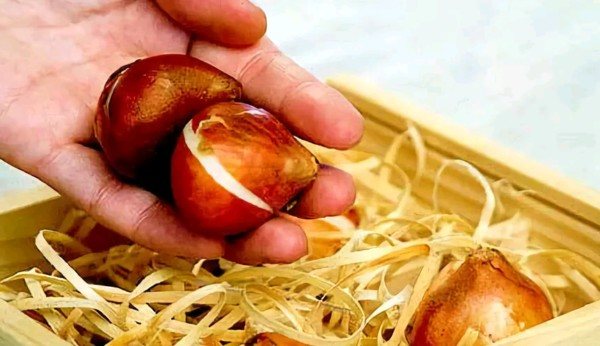

It is better to store bulbs in canvas bags or specially prepared boxes
Important! Different varieties may have features of care, watering, fertilization. As a rule, a successful variety has many fans who are a source of valuable, time-tested advice.
Winter sowing
This method has a significant number of supporters.
The beds begin to be prepared immediately after harvesting and digging up the earth. Sowing is done later, practically in the coldest weather. Seeds are carefully selected: they must be large, dry. After embedding to a depth of 1.5 centimeters, mulch is applied from above.
The autumn soil, well saturated with moisture, allows the shifts to be nourished, but not germinated.This helps them to spend the winter under the snow without any damage to germination and start growing with the first warmth. As a rule, a soil temperature of + 3-4 degrees Celsius is sufficient.
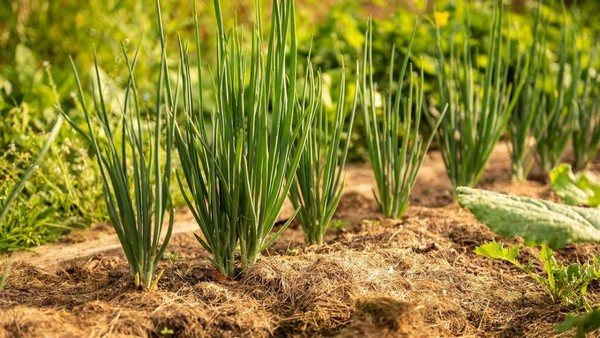

Many people prefer winter sowing - this allows you to get bulbs in the spring and spend less time caring for the beds.
Other seeds
You can also plant onion sets. The material for obtaining it is "nigella". These are the seeds that form after the onion arrow has flowered. You can easily get them yourself. Bulbs with such a reproductive capacity are formed only in the second year, but as a seed for onion sets, it is quite suitable.
You can plant seeds already at the end of April, and this is an advantage over seasonal onions. If the frost hits or the temperature drops in late spring, the nigella will withstand this test, while the bulbs will stop growing.
It is necessary to choose a place for future planting and prepare it in advance, therefore work on the formation of beds begins in the fall. Finding the right place for your garden culture is a science. What is known about the bow?
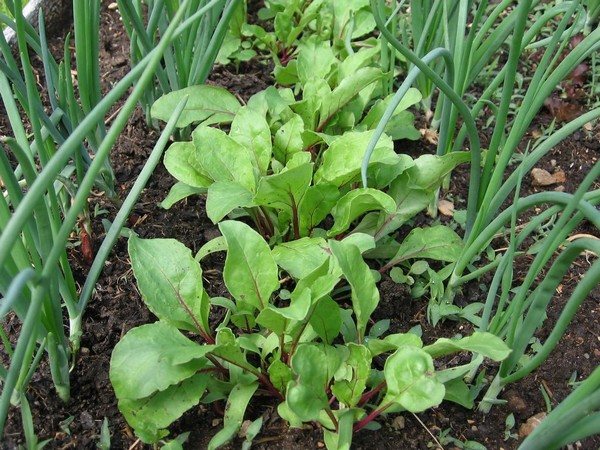

When growing onion sets on your own, full-fledged bulbs can only be obtained from "nigella" after a year.
Important! You should not sow nigella on the site where garlic was ripening before. Also, there should be no planting of legumes nearby. Useful precursors are cabbage and nightshades.
Not everyone agrees with the opinion that a bed with carrots will be a good neighborhood for onions. For example, watering of onions is stopped at the beginning of August, and carrots require active moisture and further. Actively growing carrot tops shade the onion bed, and this is fraught with the development of diseases.
The place should be accessible to sunlight and well ventilated. Loose soil contributes to the necessary aeration. Stagnant liquid in the bed leads to rotting of the bulbs.
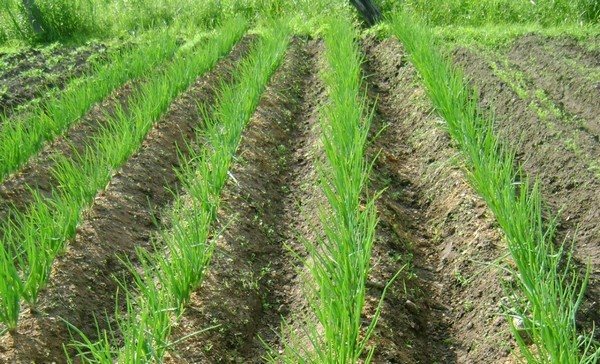

It is important to choose the right "neighbors" for onions - great if they are cruciferous or nightshade
The preparation of the soil itself consists in digging it up, loosening it, and removing weeds. Mineral fertilizers are traditionally applied. In this case, the choice is made in favor of potash-phosphorus compositions, but there are disagreements regarding organic matter. Some experts believe that manure should not be applied - it stimulates the growth of the green arrow, taking away nutrients from the turnip and slowing down growth. In the spring, nitrogen fertilizers are added to the complex.
Important! It is recommended to change the landing site every 3-4 years.
Onion Exhibition - a masterpiece of breeding
Who would have thought, but such an onion giant (weighing up to 1 kg) absolutely does not cause tears during the cutting process. And its delicate and sophisticated aroma makes culinary experts simply sing odes to this Dutch variety. It is excellent both as an ingredient for cooking and as a decorative decoration for ready-made meals. How to grow such a garden miracle at home in the garden? Let's figure it out.
Features of the Exibishen bow
Fruits-heads of the plant have a slightly yellowish tint and thin husks, in shape - oval with a thin neck. Dedicated lovers of the Exibichen onion have collected a number of benefits, including:
- refined, unsharp and slightly sweetish taste and aroma, while very juicy;
- after consumption does not leave a typical aftertaste and smell;
- ripens quickly;
- planting onions both in spring and before winter is acceptable;
- multifunctional in kitchen use.
Among the disadvantages, one can single out only a very short storage period (no more than 4 months) and a rather intricate growing process.
Growing methods
Planting Exibition onions is not an easy task, but by adhering to certain requirements, you can easily get the desired harvest. You can grow the Dutch giant in different ways, namely:
- seed;
- seedling;
- planting onions with sevkom.
To make it easier for you to decide and choose the most convenient growing option, we will consider each of the listed methods in more detail.
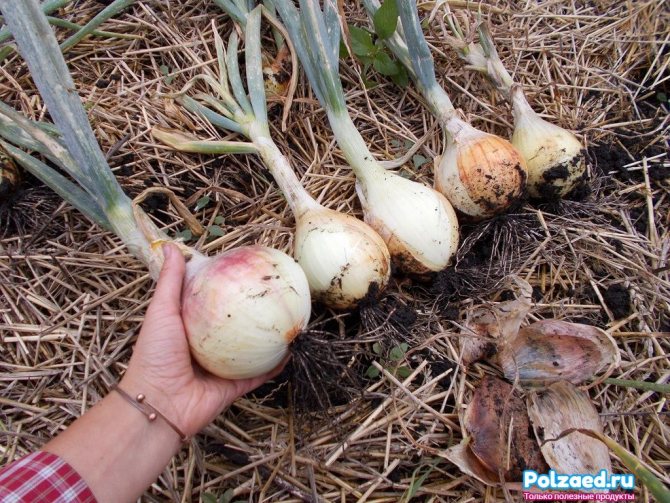

Seed sowing
This method is considered one of the simplest and most affordable. The preparatory process must begin with the preparation of a special paste. To do this, add a teaspoon of starch to half a glass of cold water and put the mixture on low heat and cook, stirring occasionally. Once the consistency is ready, turn off the heat. Add AVA fertilizer to the cooled paste.
Then you need to cut the toilet paper into pieces, the width corresponding to the future bed, apply the paste pointwise (about every 5 cm) and immediately put the seeds, then leave for a day to dry. Next, you need to twist each tape into a so-called roll and wrap it with cellophane. Store in this form until disembarkation.
Before planting, the soil must be loosened, weeds removed and carefully treated with an antifungal agent. The tapes must be placed in beds up to 2 cm deep and sprinkled with loose earth. It is advisable to cover the crop for warming and to protect it from pests with non-woven materials. Watering is recommended with warm water with a soft spray.


When to plant in open ground
It is difficult to establish an unambiguous time frame for the spring period, since everything depends on the climate of the region. An important point to pay attention to is the temperature of the soil (should be no less than +10 degrees) and the absence of subzero temperatures even at night.
Exhibishen has proven itself well in the process of sowing for the winter. For such a landing it is necessary:
- choose a well-lit area. Loosen the soil with the addition of sand and humus;
- prepare holes no more than 2 cm deep at a distance of 15-20 cm from each other;
- sow and cover with earth (up to 1.5 cm). Drizzle with warm water;
- to protect against frost and against the growth of weeds, it is useful to carry out mulching (for example, with peat or sawdust);
- in winter, do not remove snow from the beds, this will help the crops not to freeze.
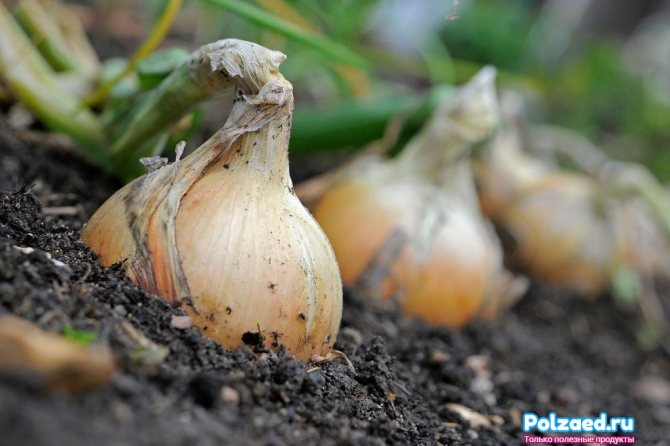

Planting onions for the winter, as you can see, will have to tinker a little more, but in the spring you can get an excellent harvest. After all, winter plants are stronger and have a powerful immune system.
Seedling planting
Planting Exhibishen onions for seedlings is not an easy process, but it can justify the work with an excellent harvest. Algorithm of actions:
- At the end of winter or early spring, it is necessary to place the seeds on a cloth and dip them in a glass of warm water (it is useful to add fresh aloe juice to the water), then dry.
- Disinfect with a special manganese solution at a temperature of +40 C (proportion: 1 g / 1 l).
- Place the seeds in special containers with soil (preferably purchased) and lightly sprinkle on top.
- Drizzle with water using a spray bottle.
- Cover with foil to create greenhouse conditions.
- Store in the shade for 10 days.
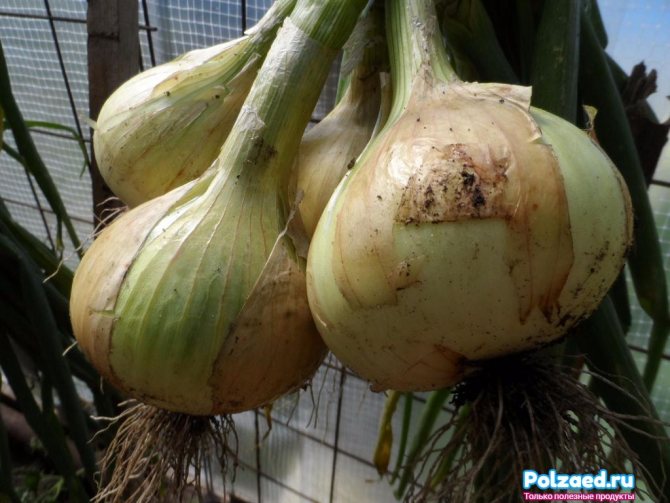

With the appearance of the first signs of growth, it is necessary to move the container to a sunny place under the following conditions:
- temperature is not lower than 20 degrees;
- good ventilation every 3 days;
- daily moisturizing with warm water with fertilizers.
Two weeks before planting seedlings, containers with seedlings must be taken outside for airing and hardening. When the seedlings reach a size of 10 cm (approximately in 2 months), the seedlings will be ready for planting in the ground.
For planting seedlings, it is necessary to prepare an area with drainage soil and good lighting. Plant in holes up to 3 cm deep.
Planting Exibishena onion sevkom
If the seeds are dense, you can provide a good seeding for planting for the next season. Planting of Exibishen onion sets is carried out either in the spring or before winter. To do this, it must be soaked in a manganese solution and treated with antimicrobial drugs. Further care of the plant is the same as in the process of growing seeds and seedlings.
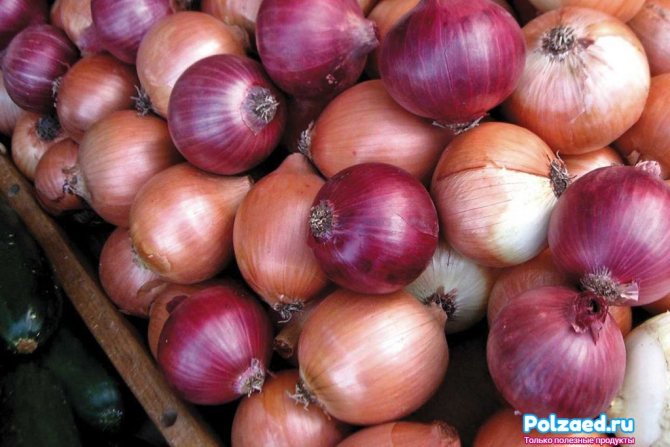

Care
In order for the plant to grow properly and to have a decent harvest, it is necessary to take proper care of it. It is important to ensure:
- timely watering. The main thing is not to overdo it, but also to prevent drying out. Better to use heated water. To keep moisture in the soil longer, it is advised to use the mulch method. To do this, you can use sawdust, straw or even paper. In the summer, when there is no rain, you need to water every evening;
- timely feeding (once every three weeks). In this case, more than ever, organics are useful (chicken droppings or mullein diluted in water). No less important are mineral fertilizers, which should include: nitrogen, magnesium, potassium, phosphorus;
- loosening and weeding. Once every one or two weeks, you need to loosen the soil. Weeding should be carried out as weeds grow, which, especially in the initial stages, can slow down or even clog onion growth.
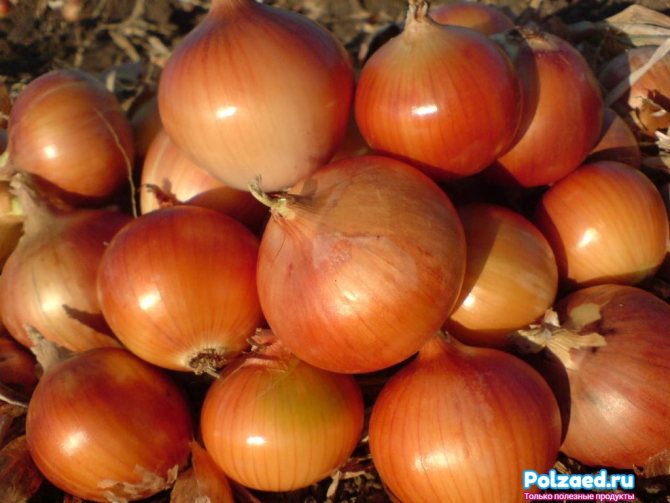

Experienced summer residents advise using a special calendar or even just a notebook where you can keep a schedule for caring for the plant. Then nothing will be missed for sure, and all the necessary procedures will be carried out in a timely manner.
Harvesting and storage of crops
It is necessary to stop watering and feeding at least 30 days before harvesting.
The harvest is harvested according to the same principle as ordinary varieties, such as, for example, Batun or Onion. When the vibrant, rich shade of the stems is dry, you know it's time to harvest. You should not delay so that the onion does not start to start up a new rhizome. The harvesting period usually falls in late summer and depends on the region and planting time. After harvesting, the fruits must be dried well in the sun, and then dried in a dark place. Then, excess husks are removed from the bulbs and moved to a room with a temperature of + 5C for storage.
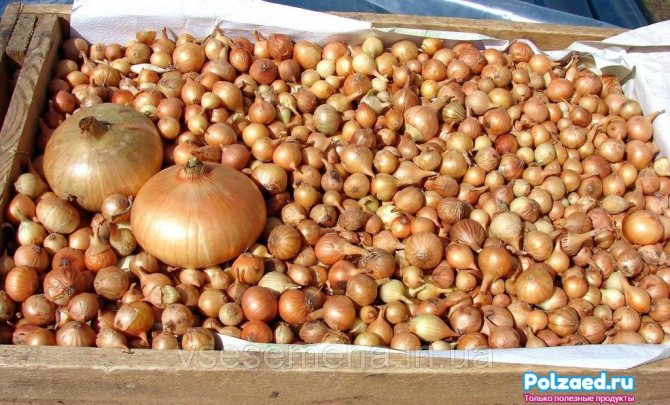

Required amount of seeds
The mass of onion seeds will be approximately equal for all species and varieties. One gram of onion seeds contains 250 to 450 seeds. For leeks, this figure is slightly more from 300 to 500.
The shelf life of planting material is 2 to 4 years. Then the germination of seeds decreases sharply. Optimal use of onion seeds from last year's harvest.
Low germination is due to the fact that the seeds do not ripen at the same time.
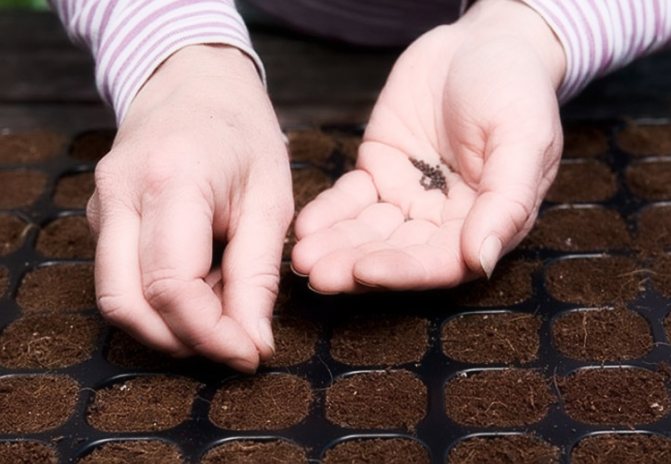

How to properly collect and store onions
Harvested in early or second half of August. In cold regions and in September. Watch the weather and precipitation. Main symptom: the leaves turn dry and yellow. The neck of the onion becomes softer, and the husk becomes the color that suits the variety.
It is impossible to delay the collection, otherwise it will affect the preservation of the bow. They pull it out with tops, and then put it in a warmed and ventilated room. Then the feathers are cut off, leaving the tip 7-11 cm. The crop is dried at a temperature of 30 degrees for two weeks. Then they put them in baskets and put them in a dry room. You can read more about how to remove onions in our article.
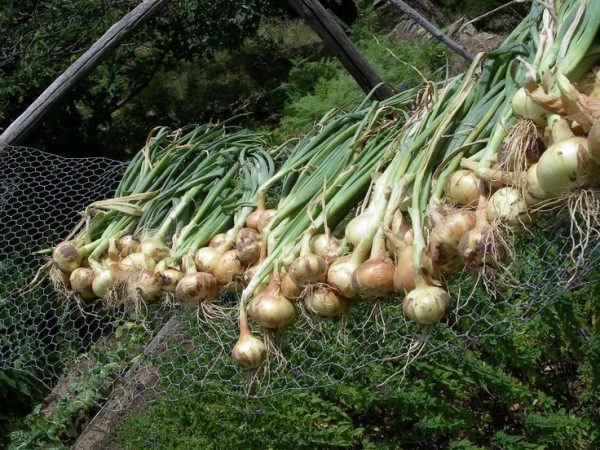

The main thing after harvesting is to ensure the onion crop is dry, ventilated, and then warm.
To get large and strong heads, you need a little: choose a variety, prepare the ground and properly process the bulbs. If you follow these rules, you will definitely not be left without a crop.

